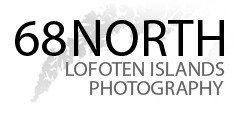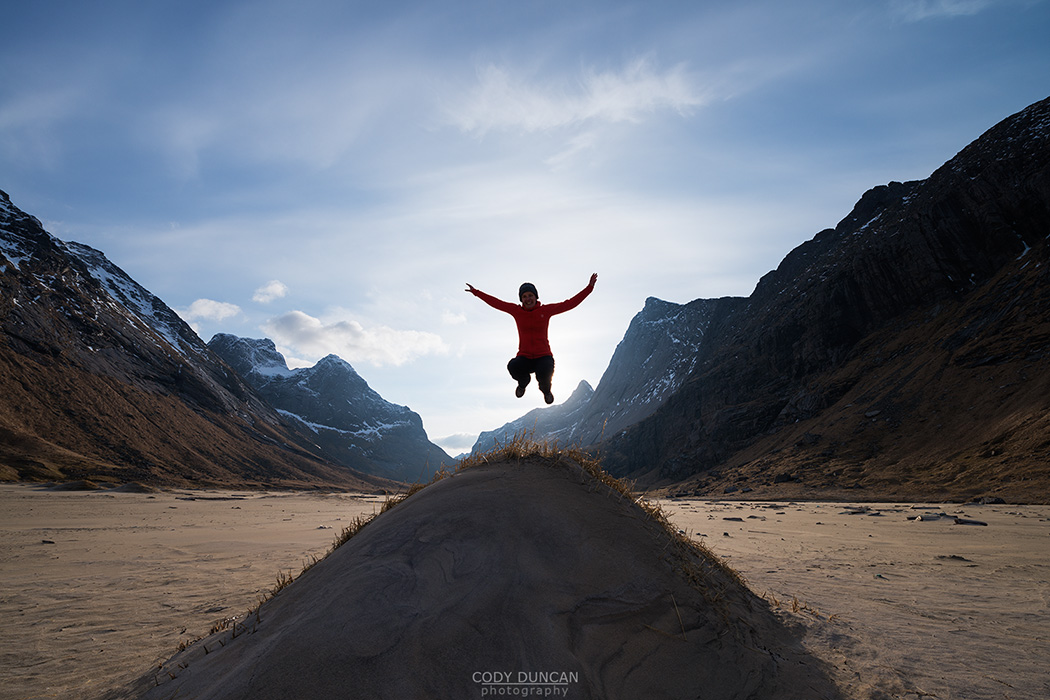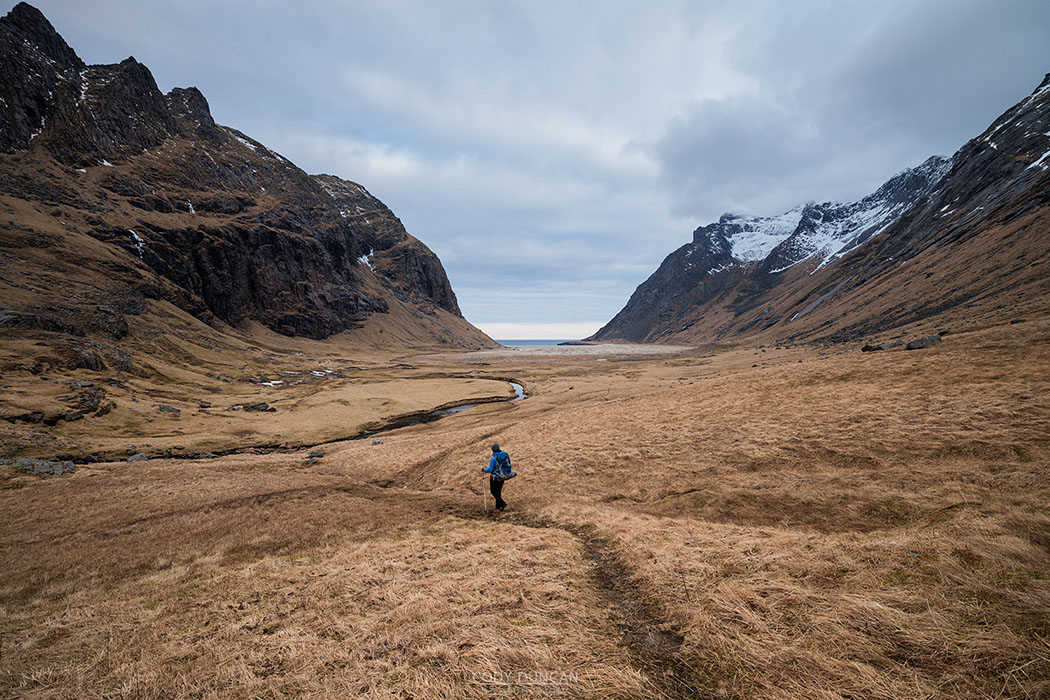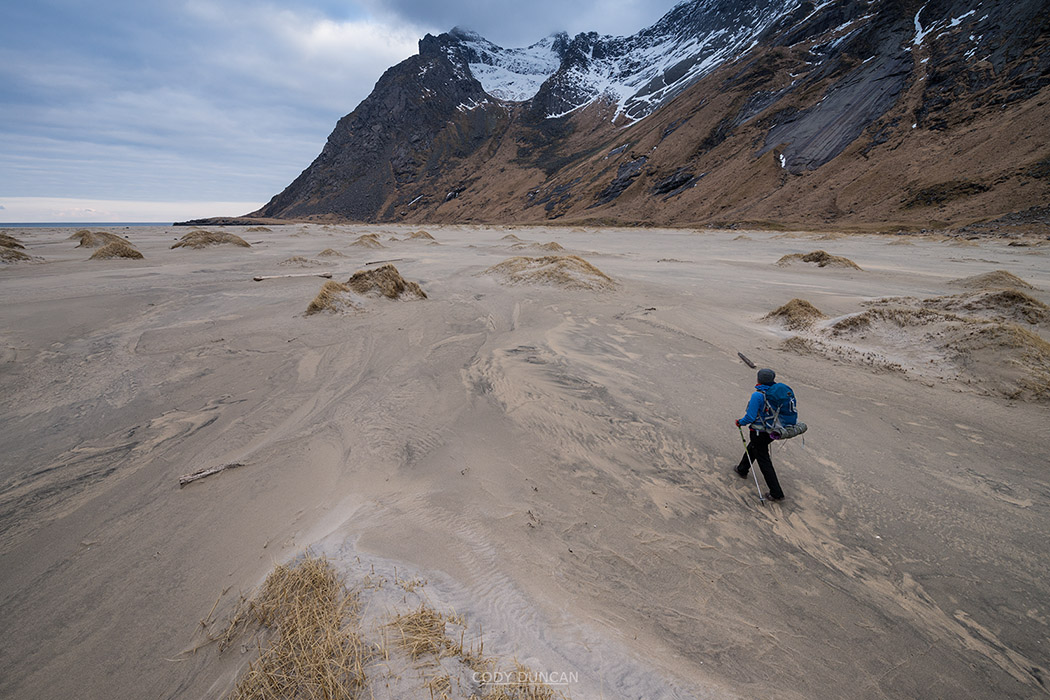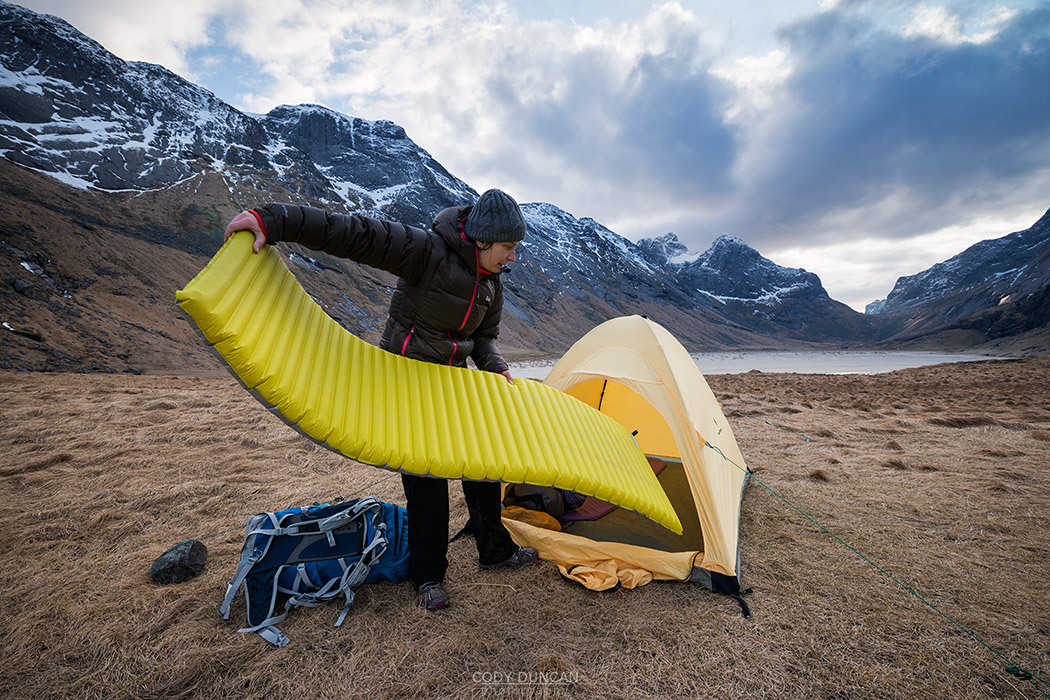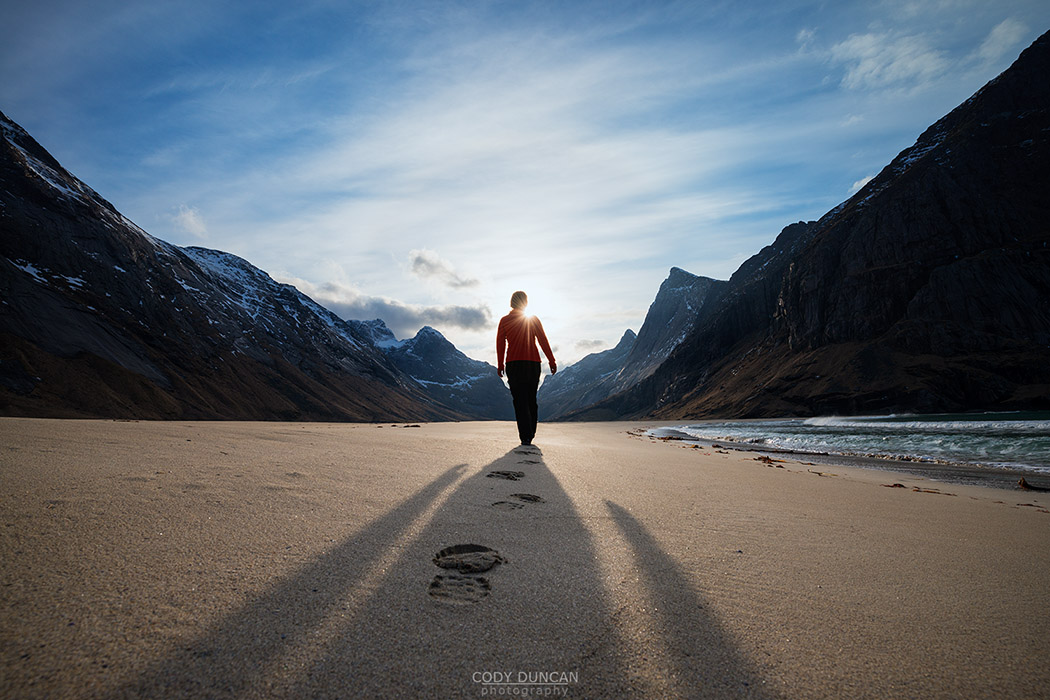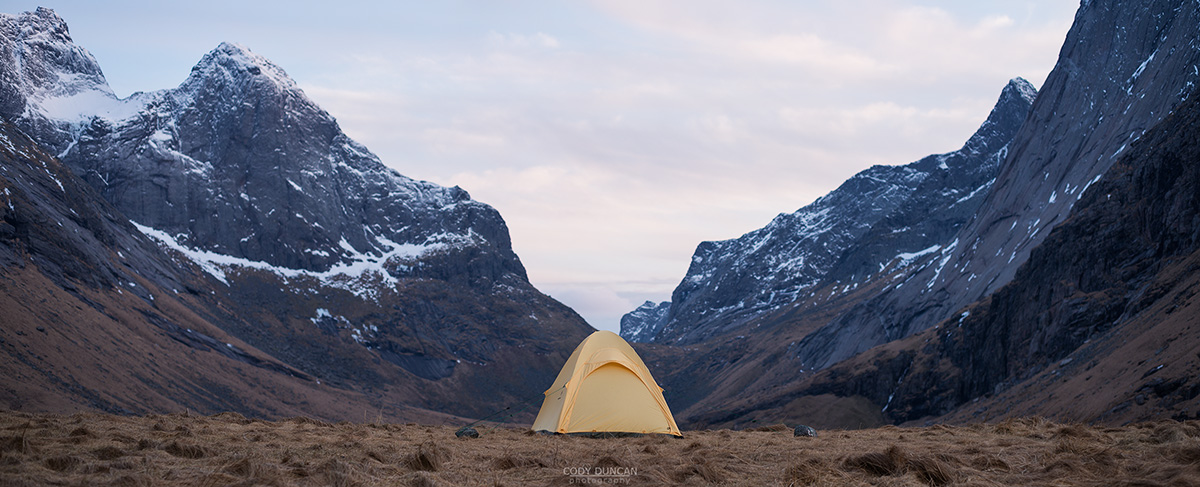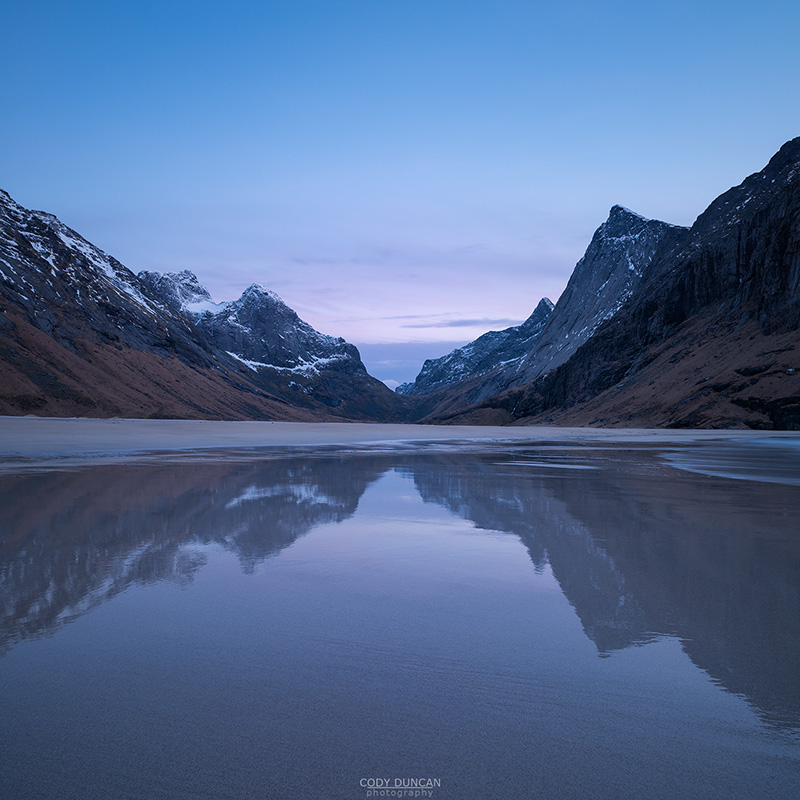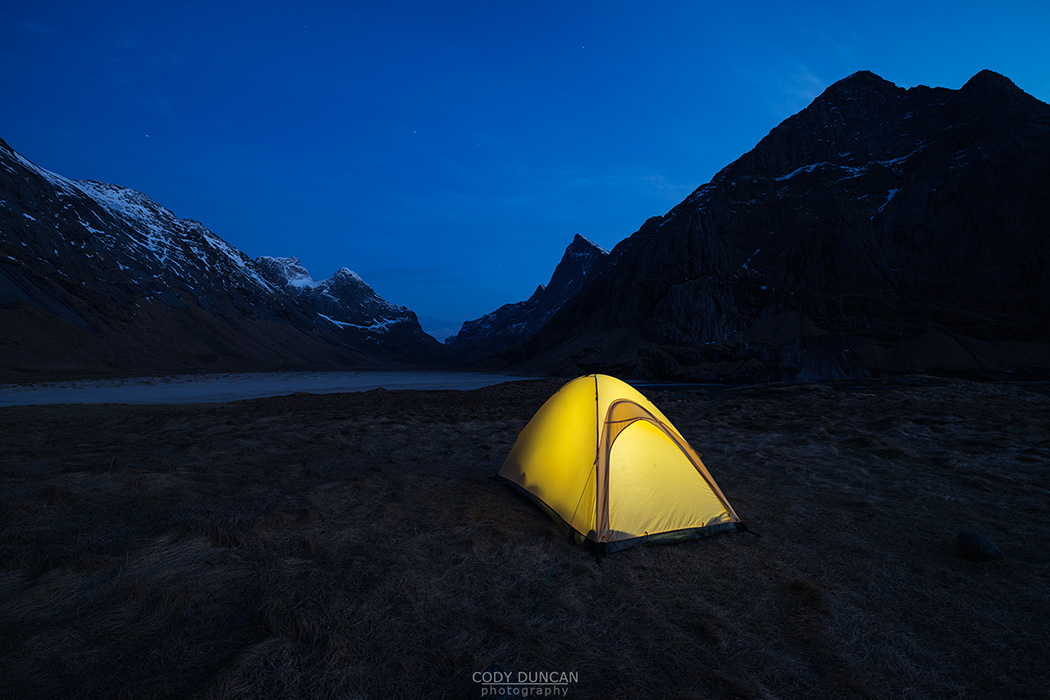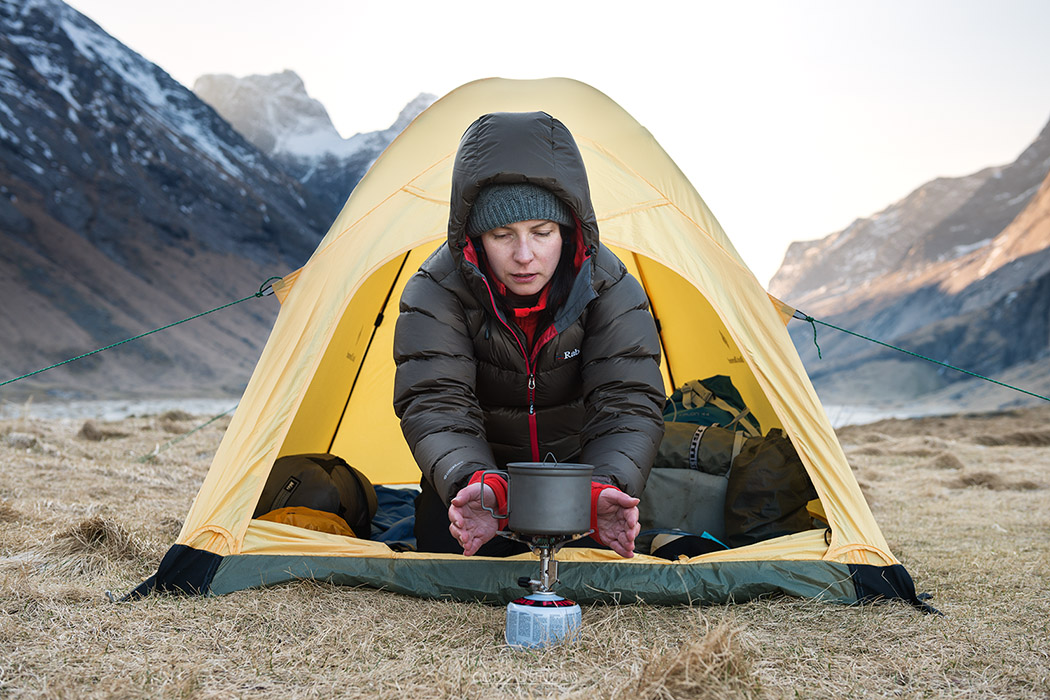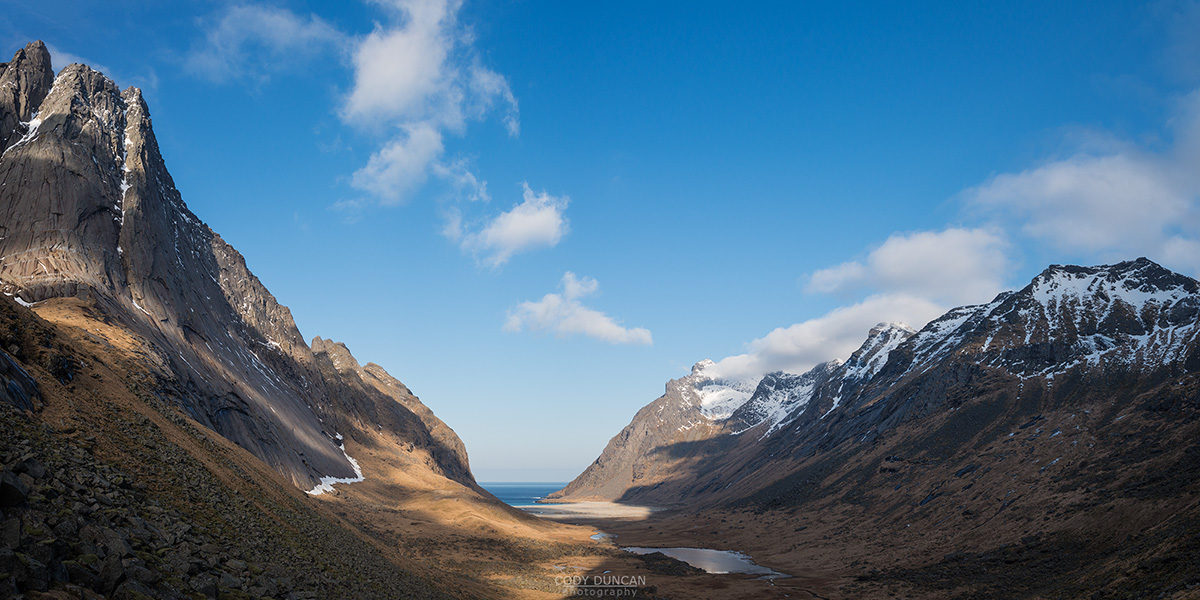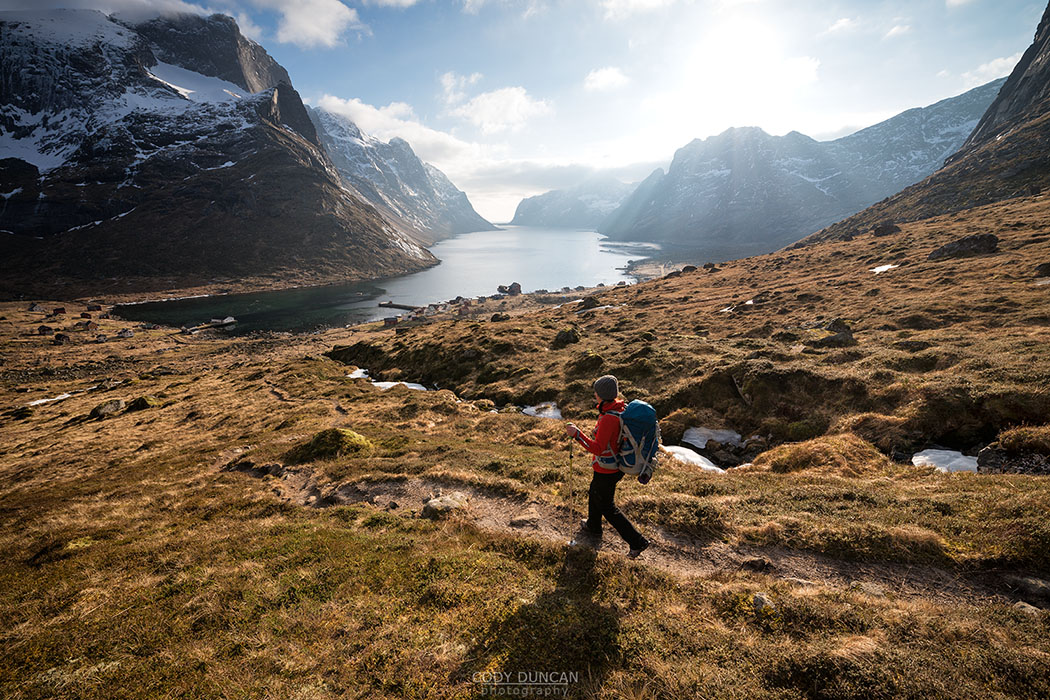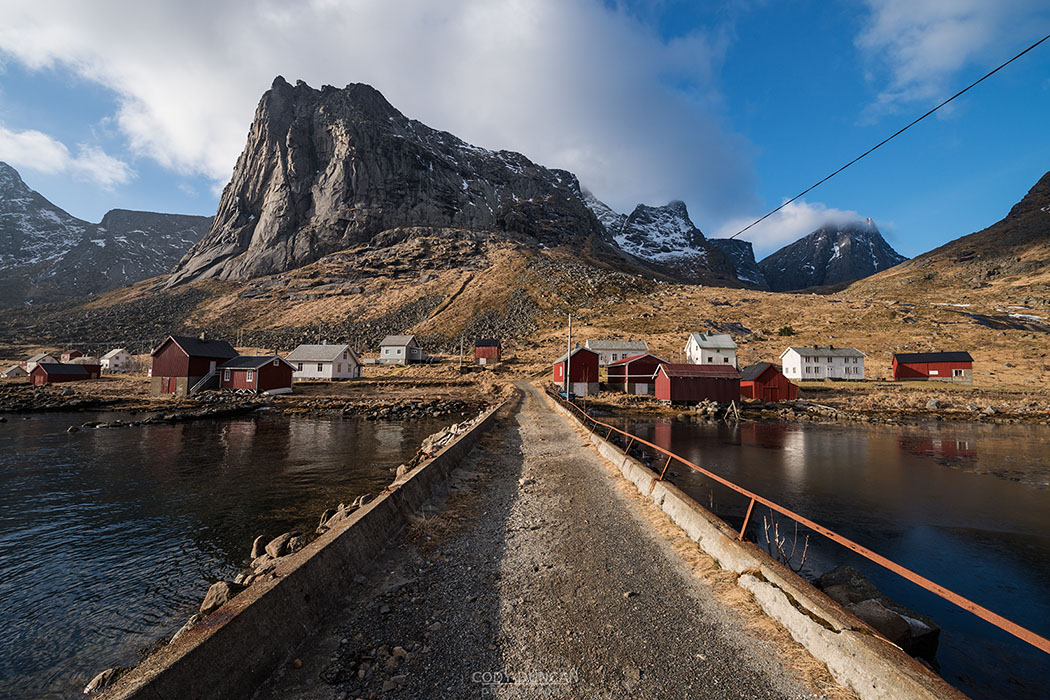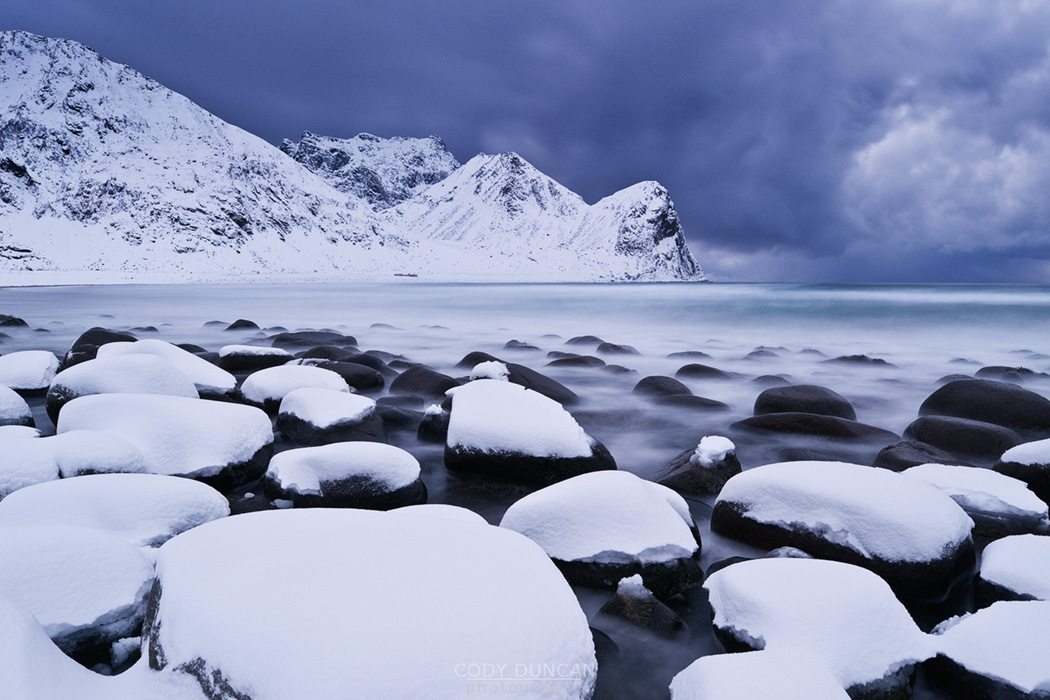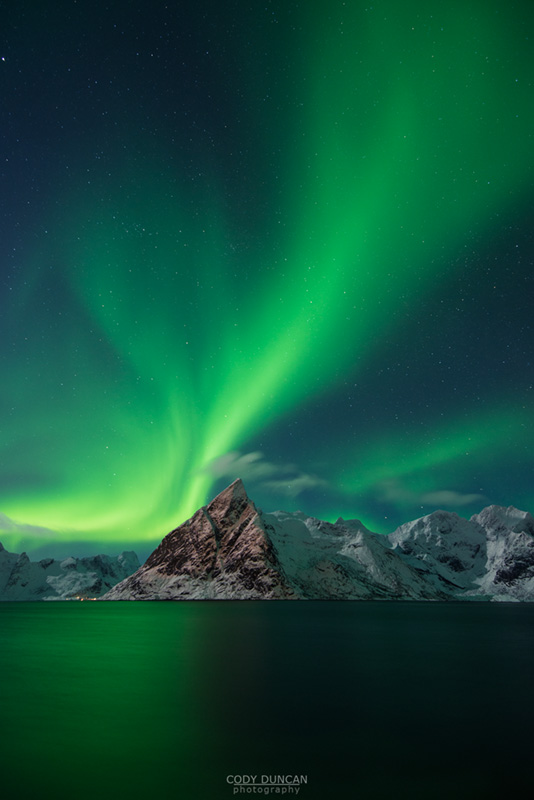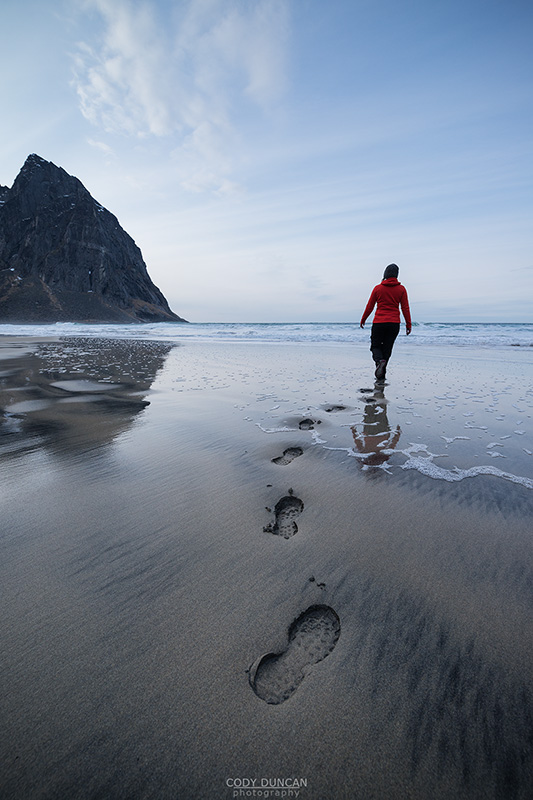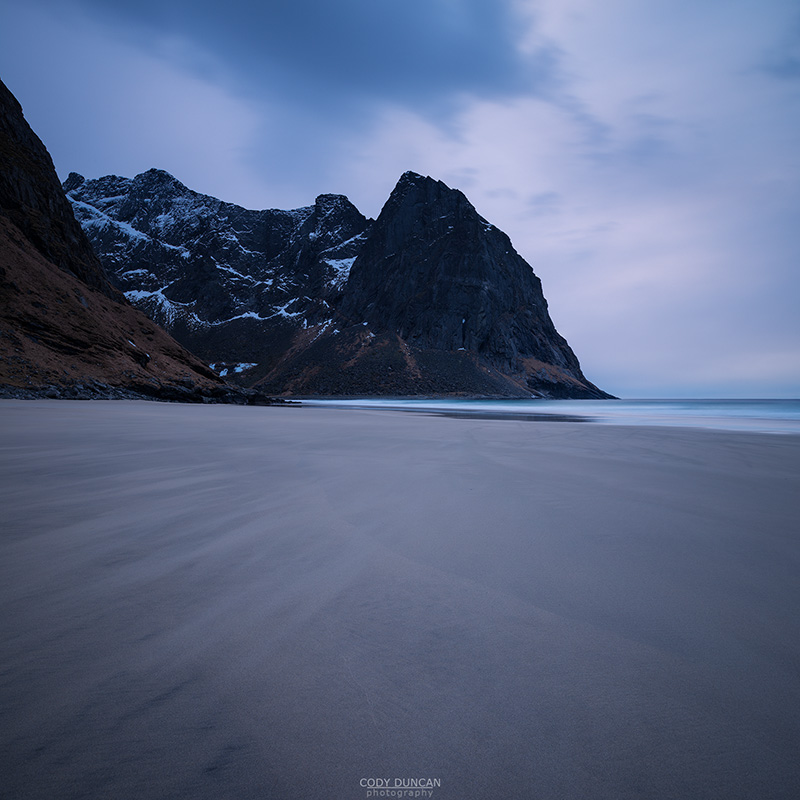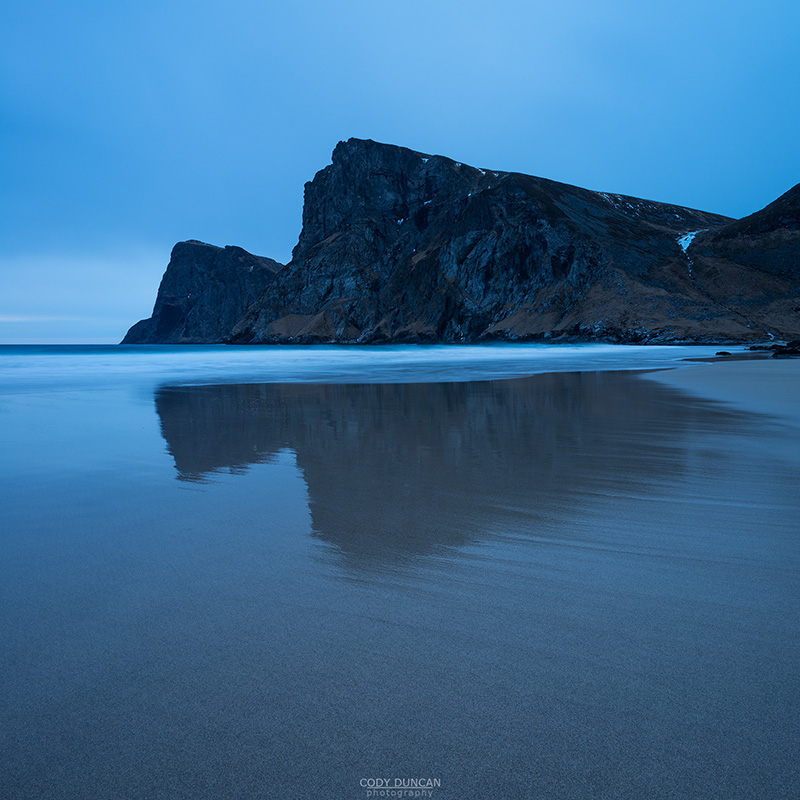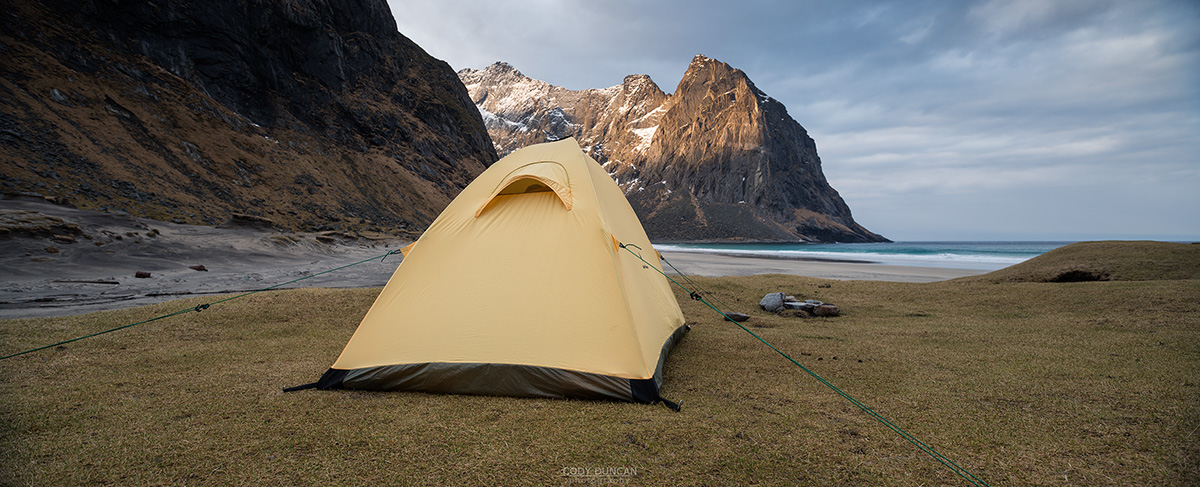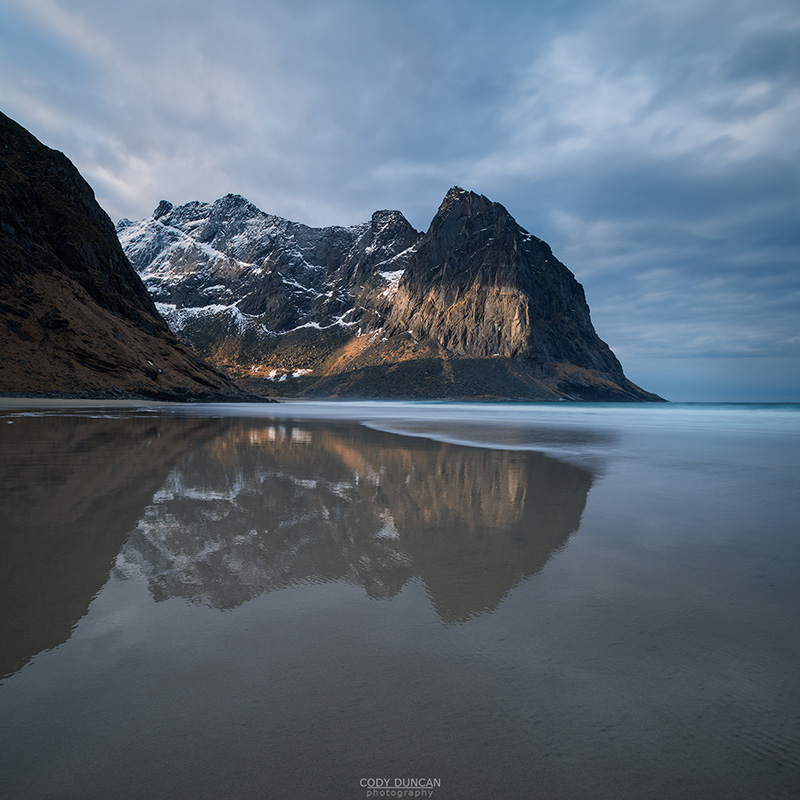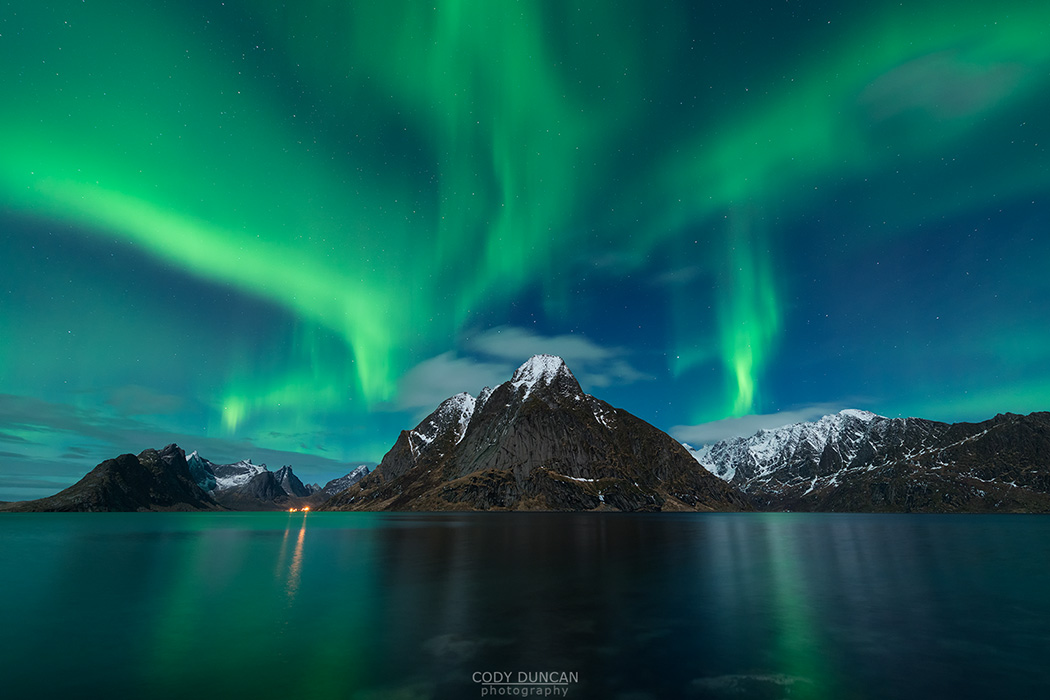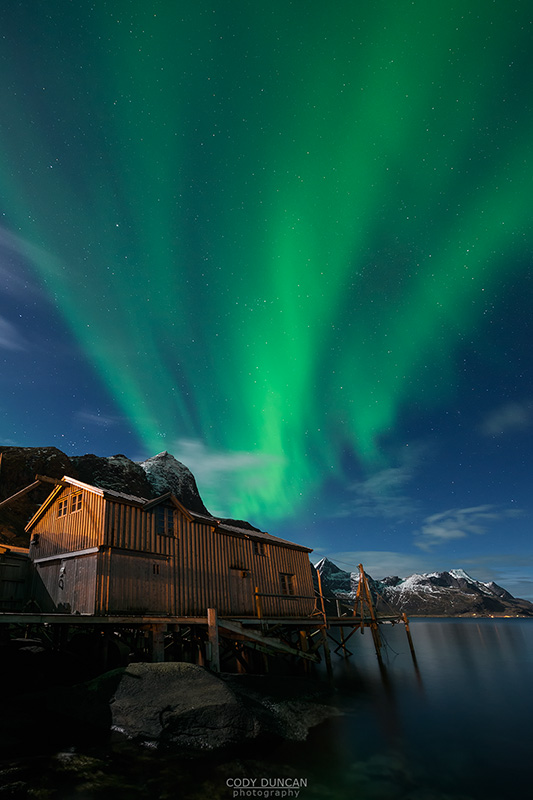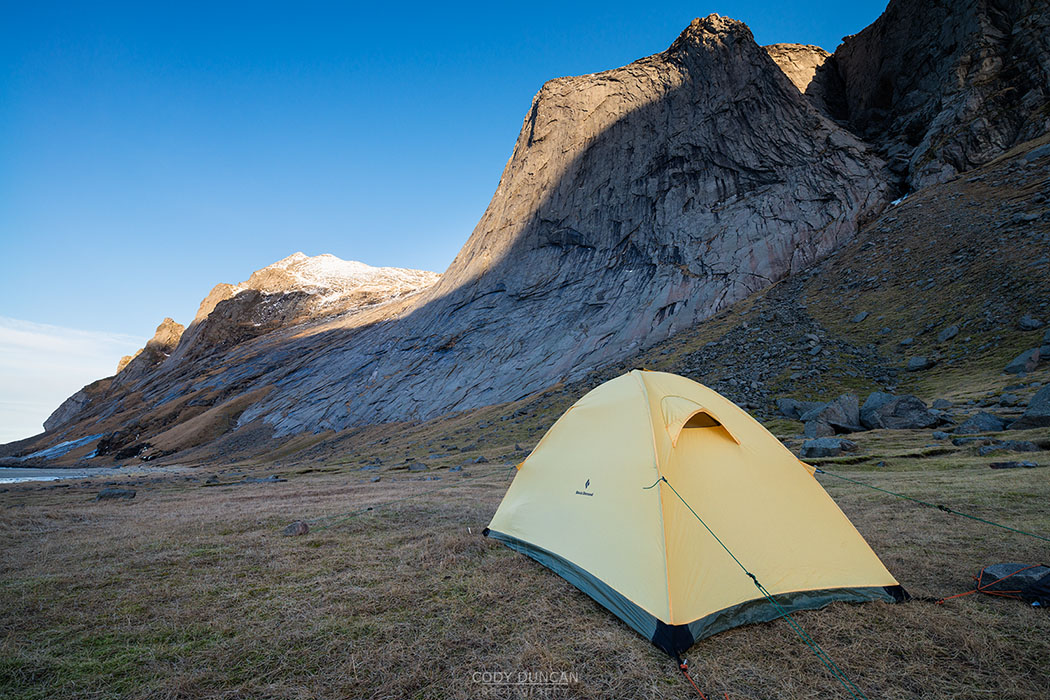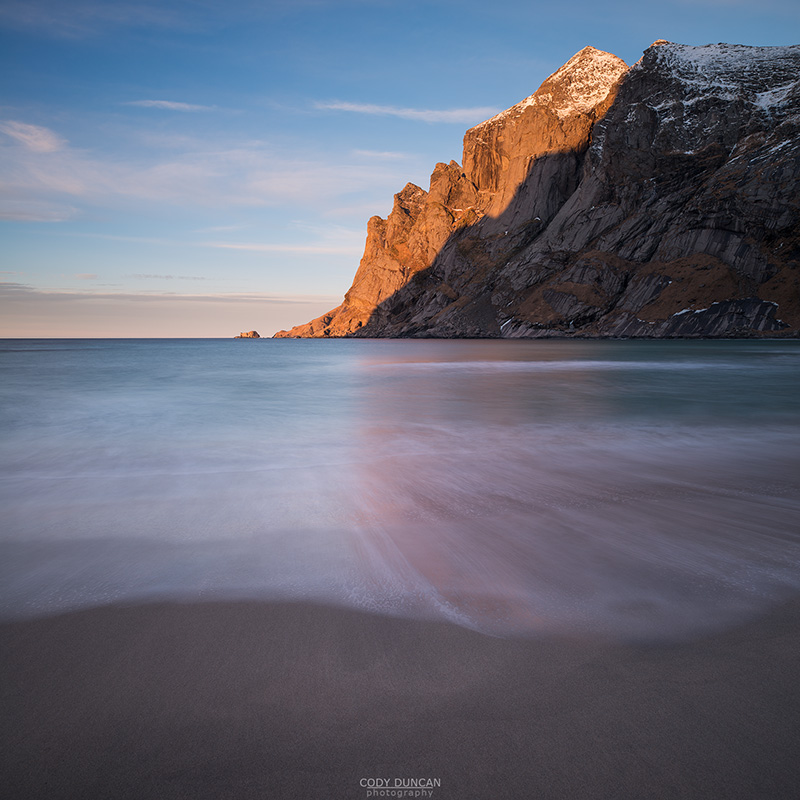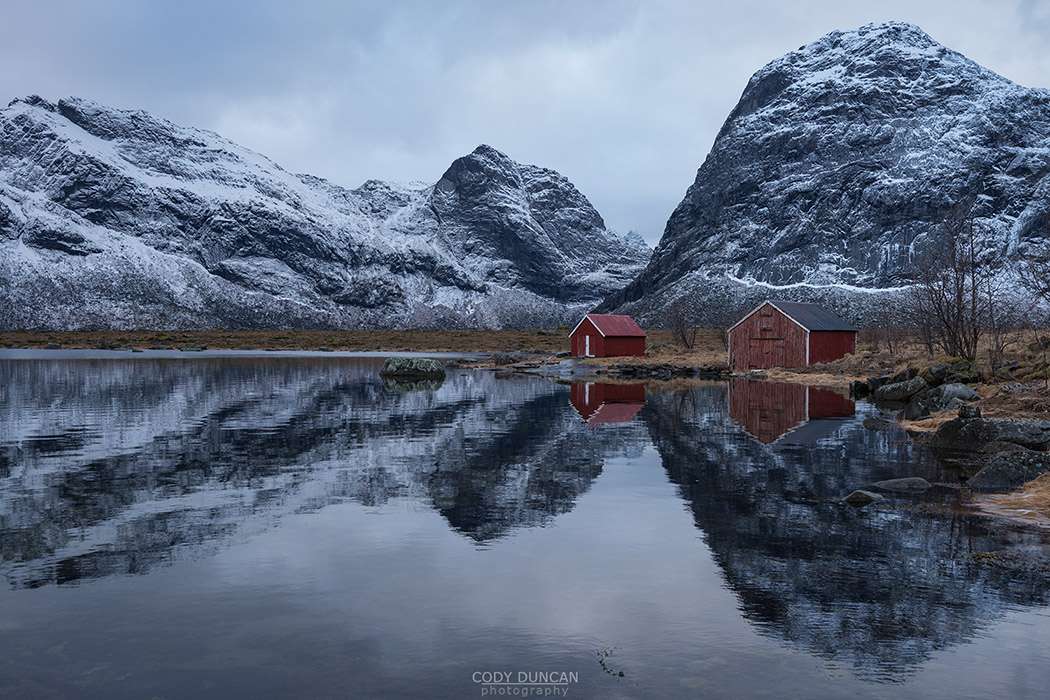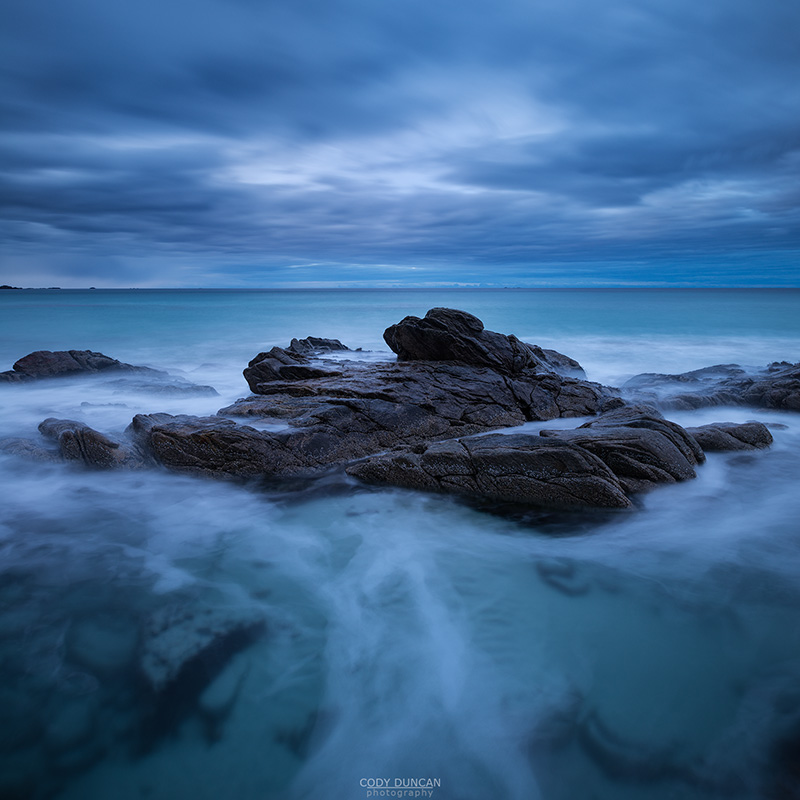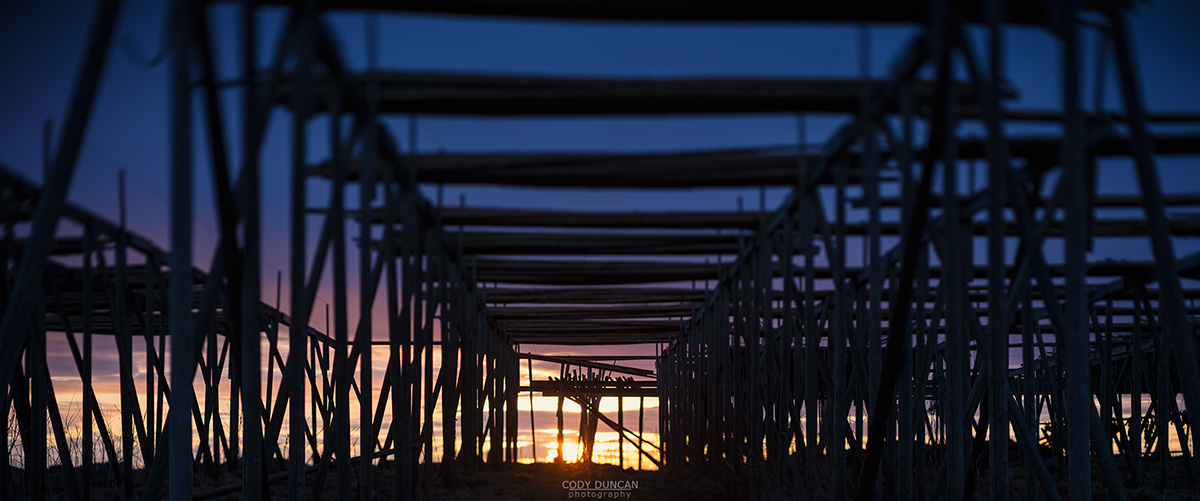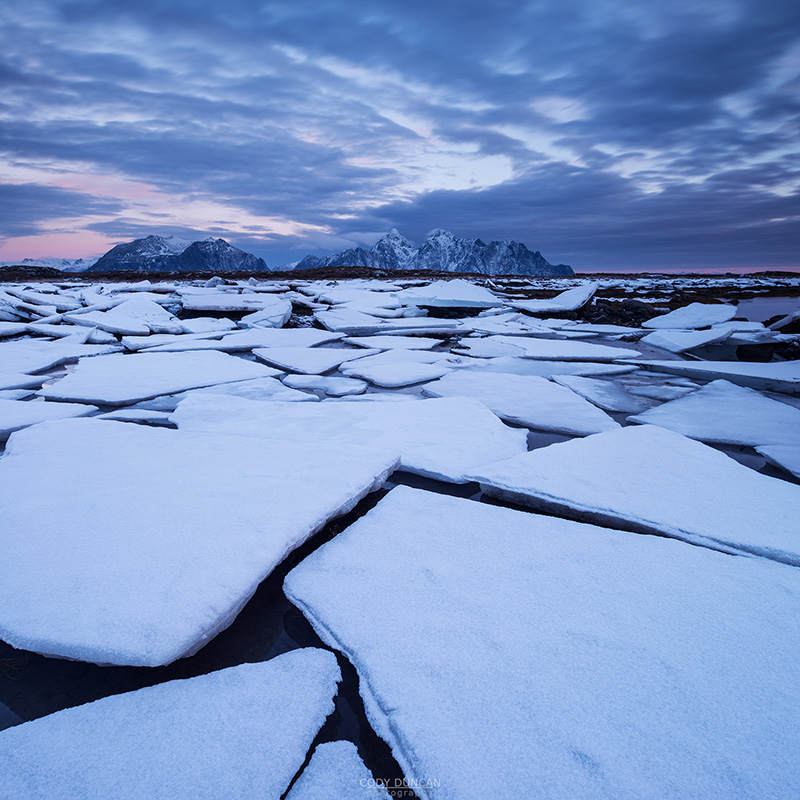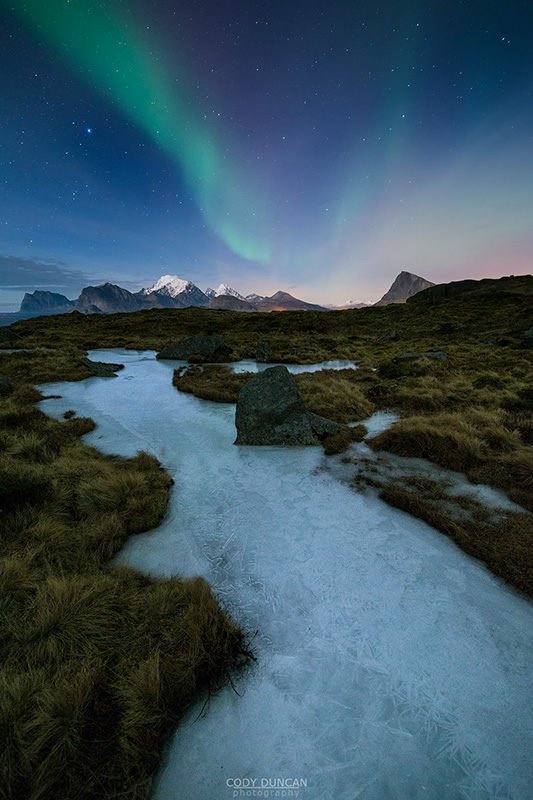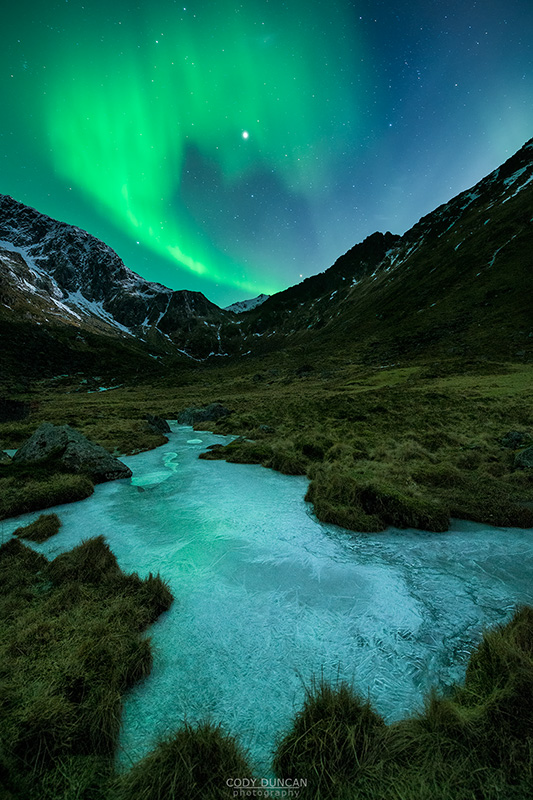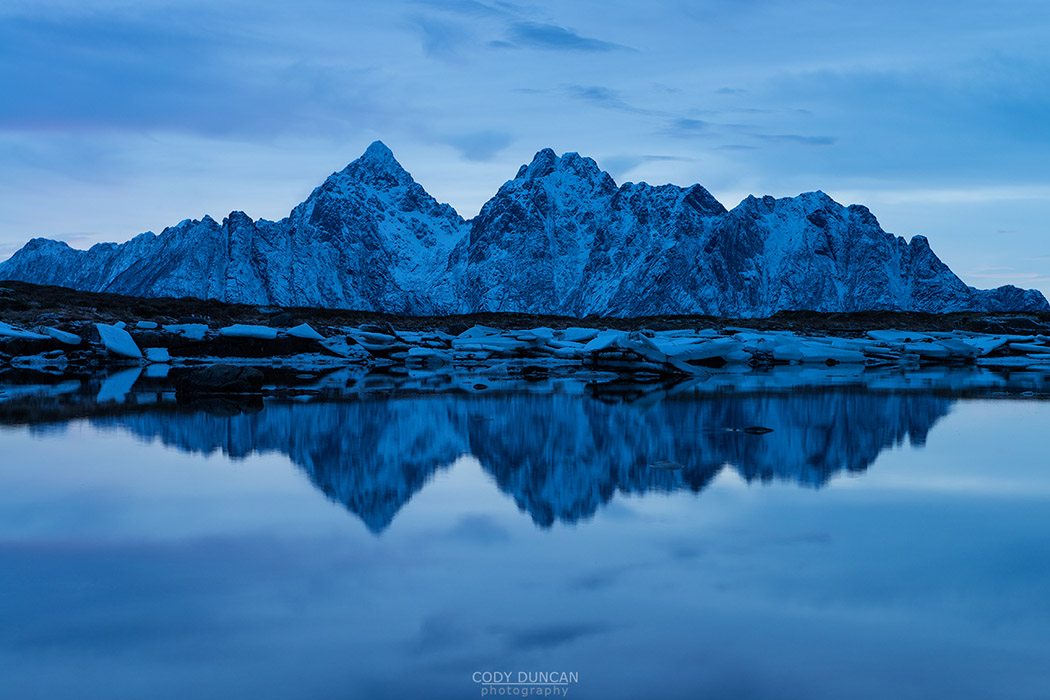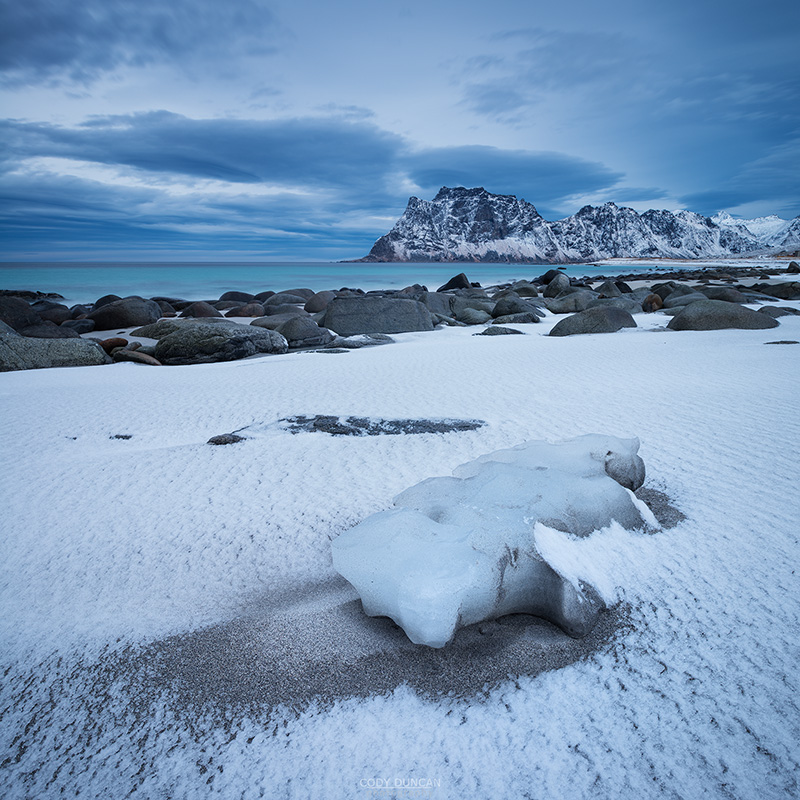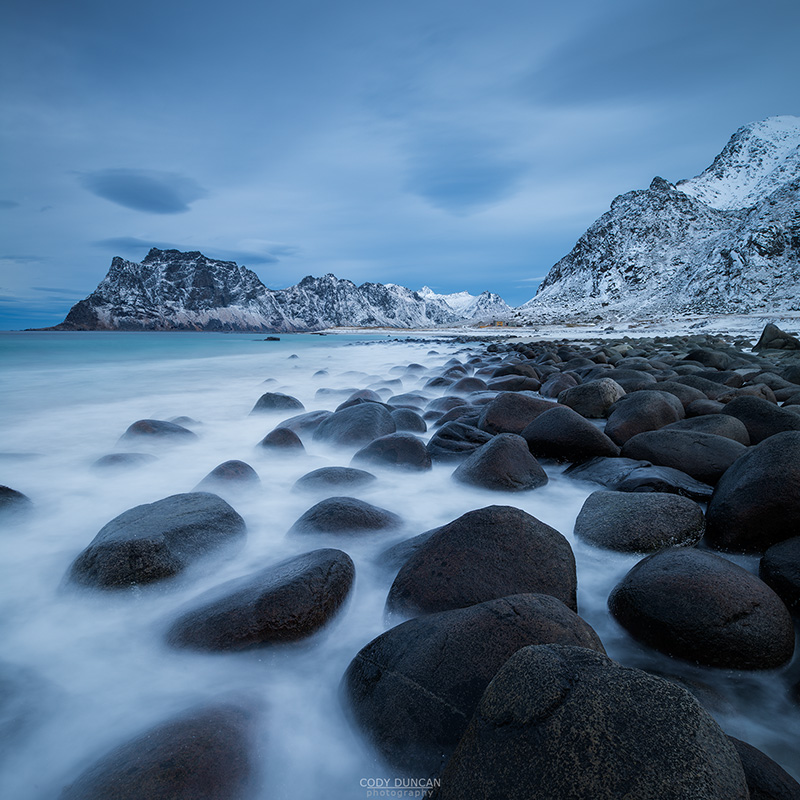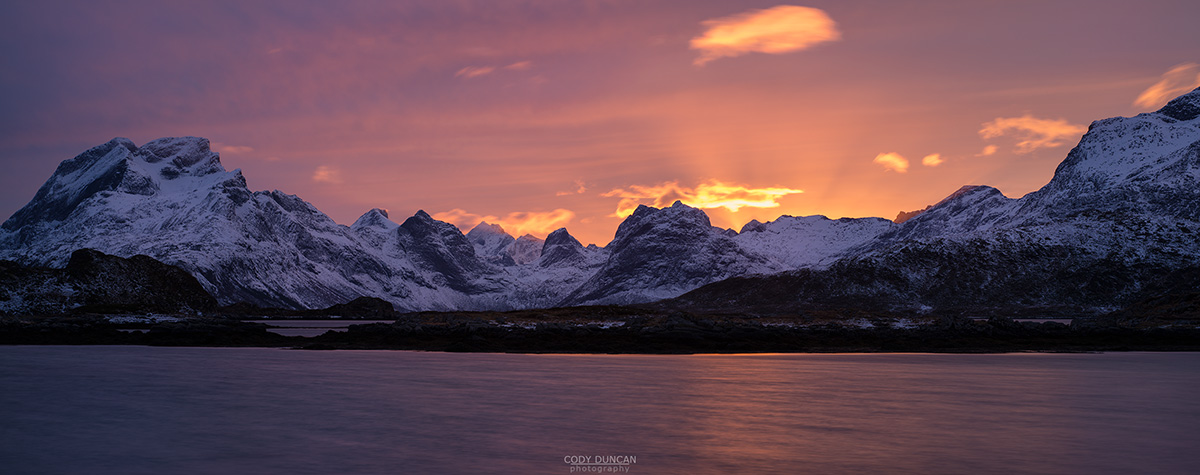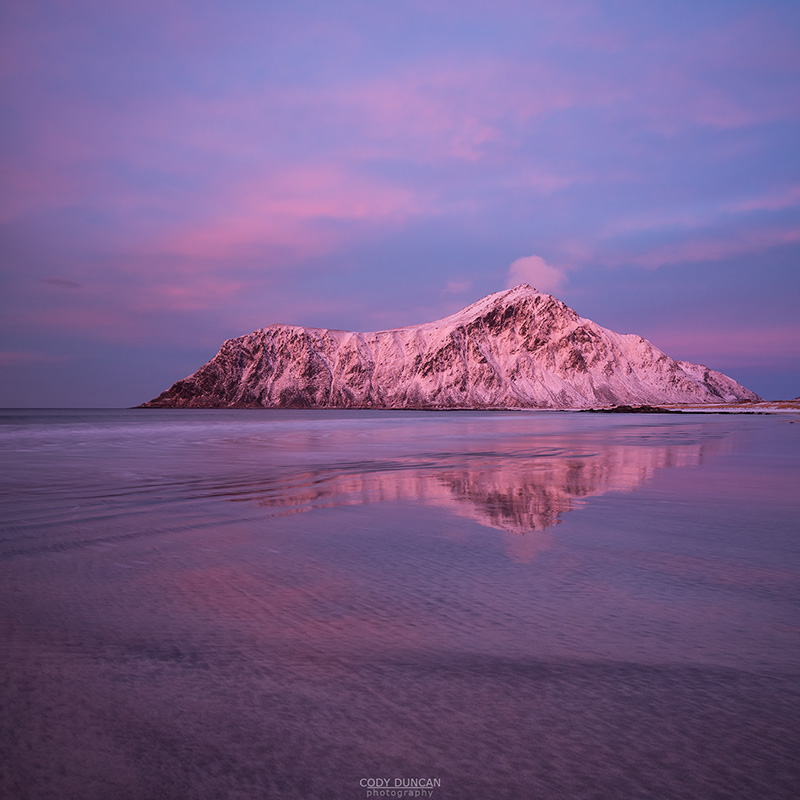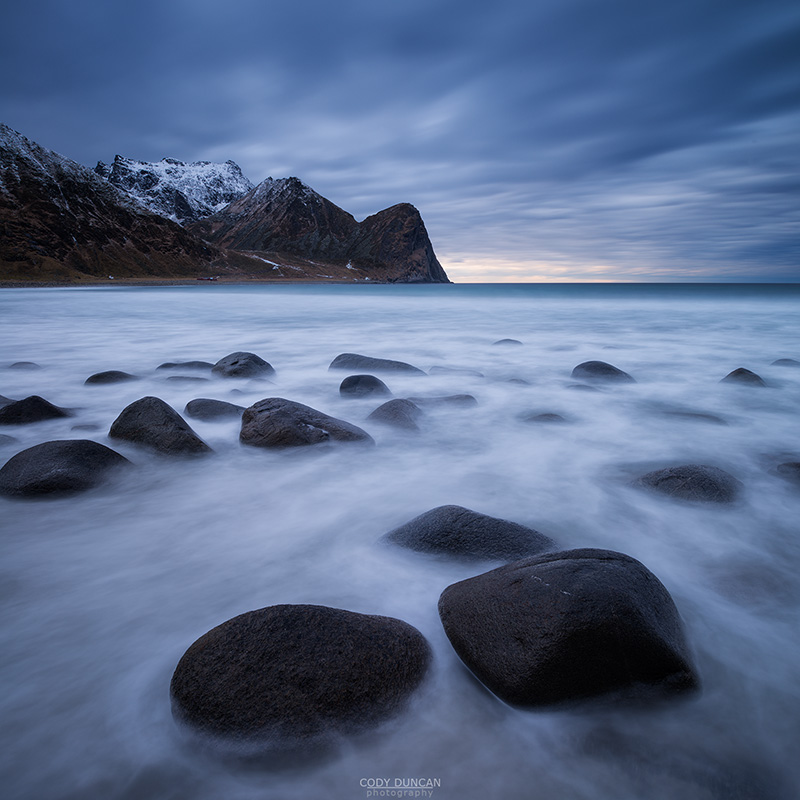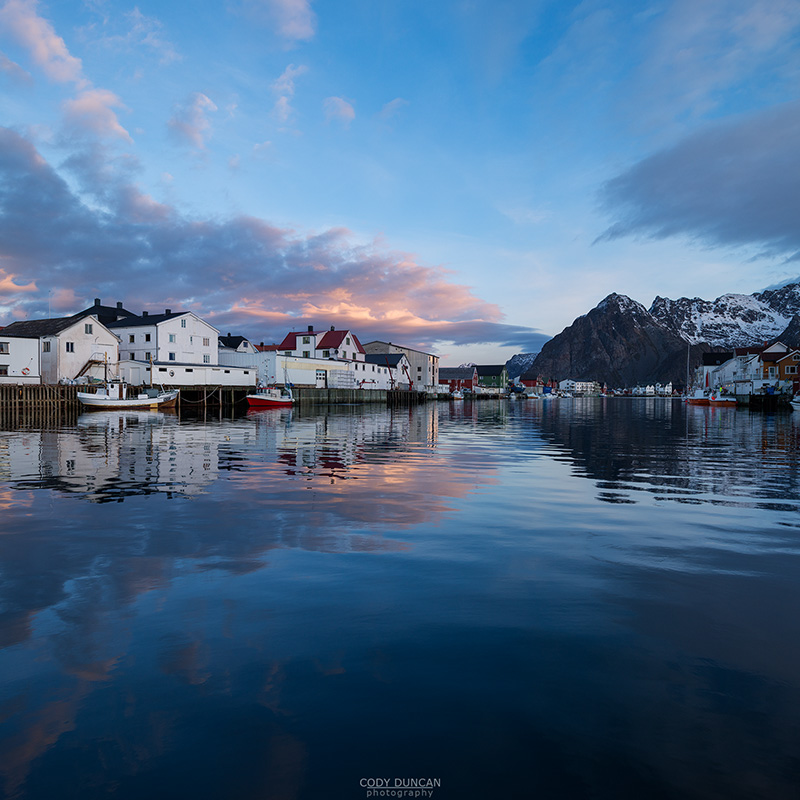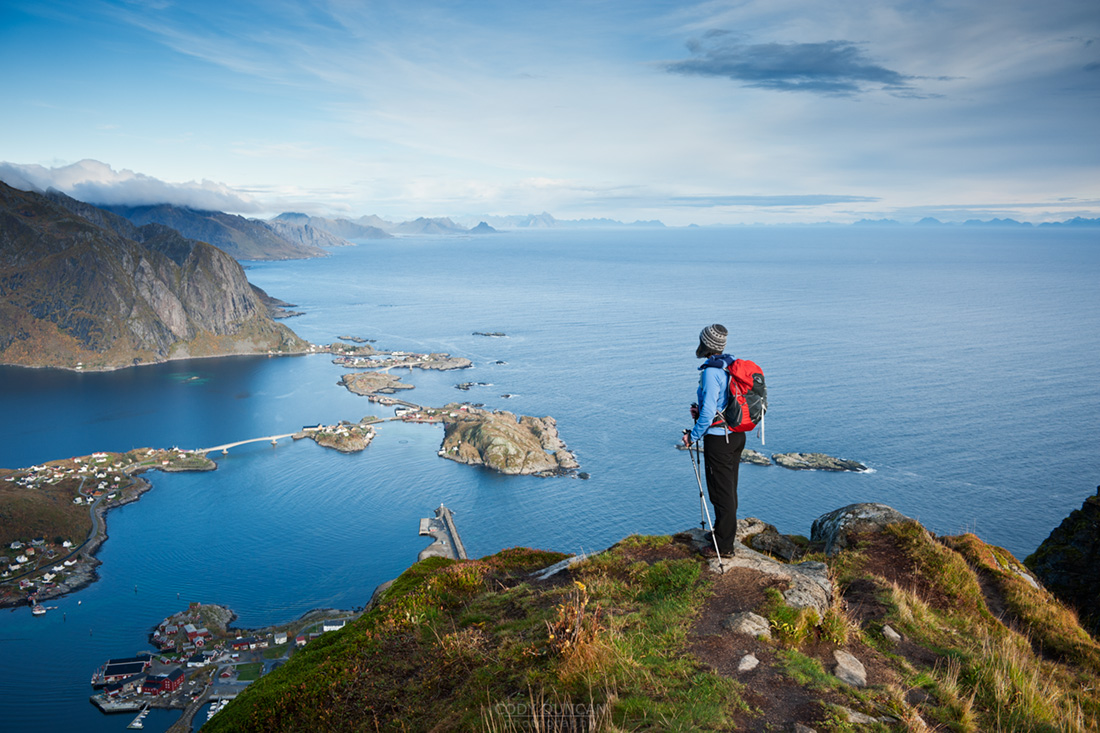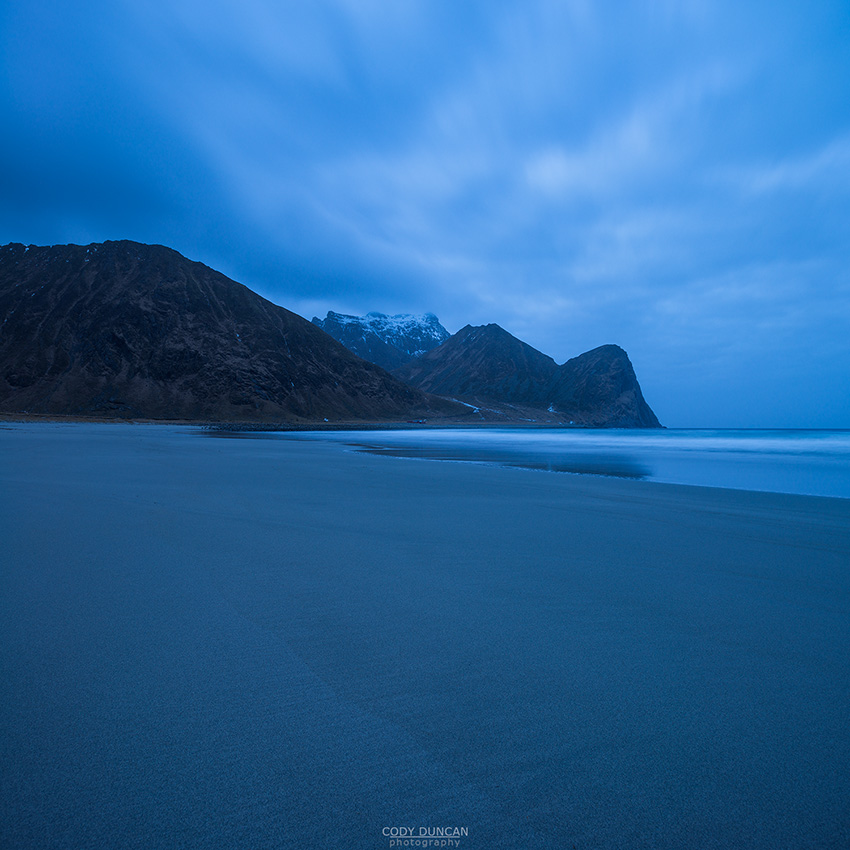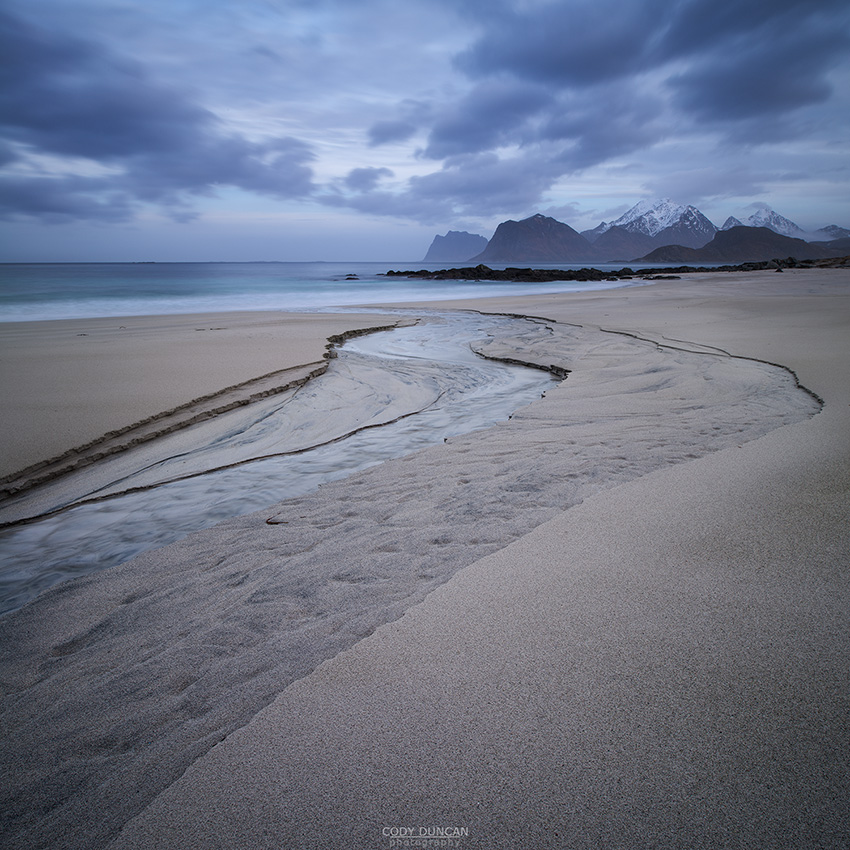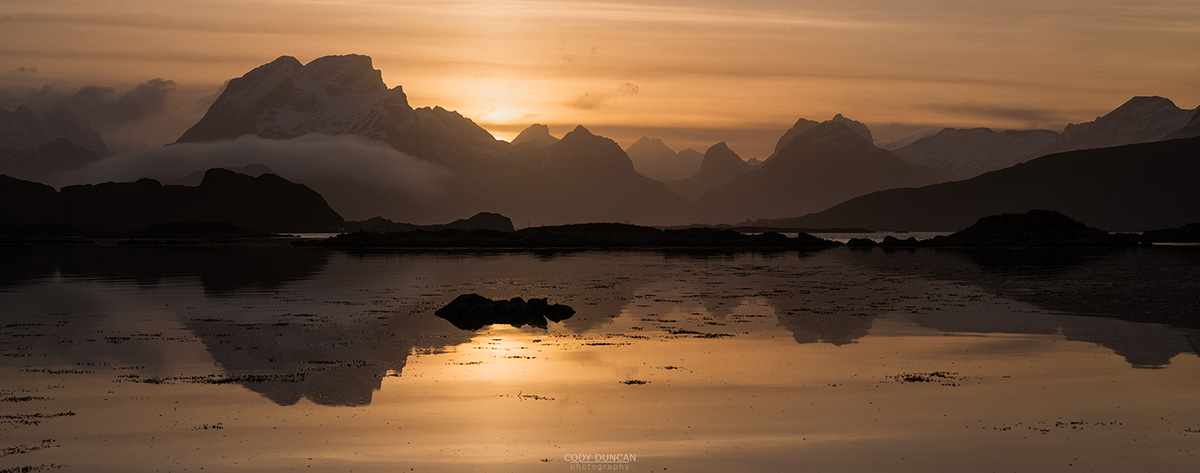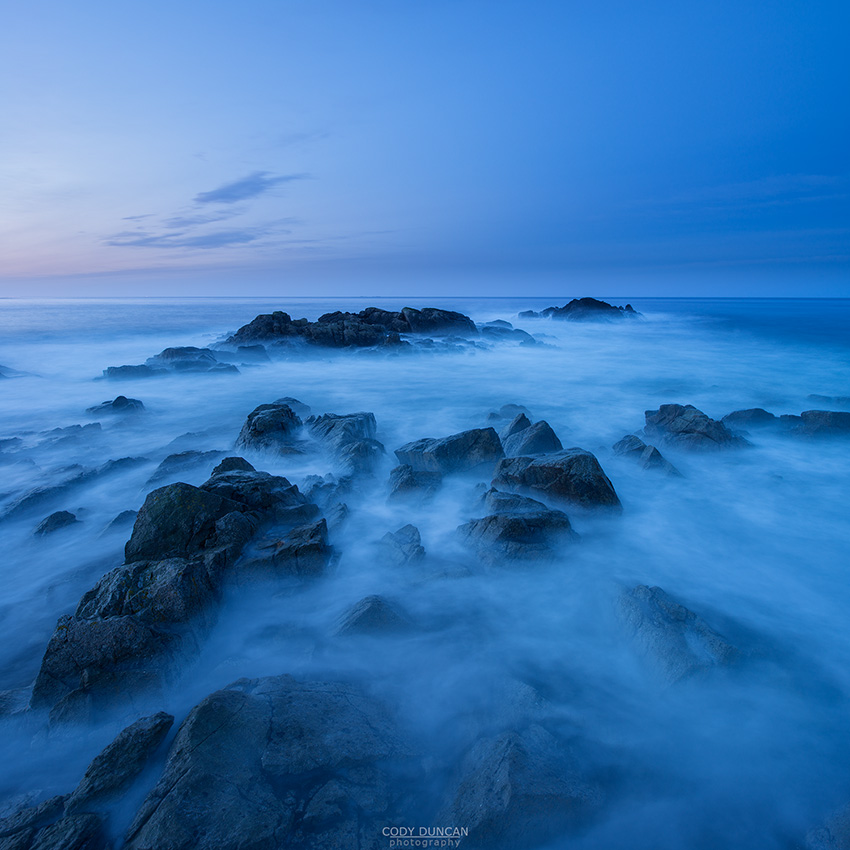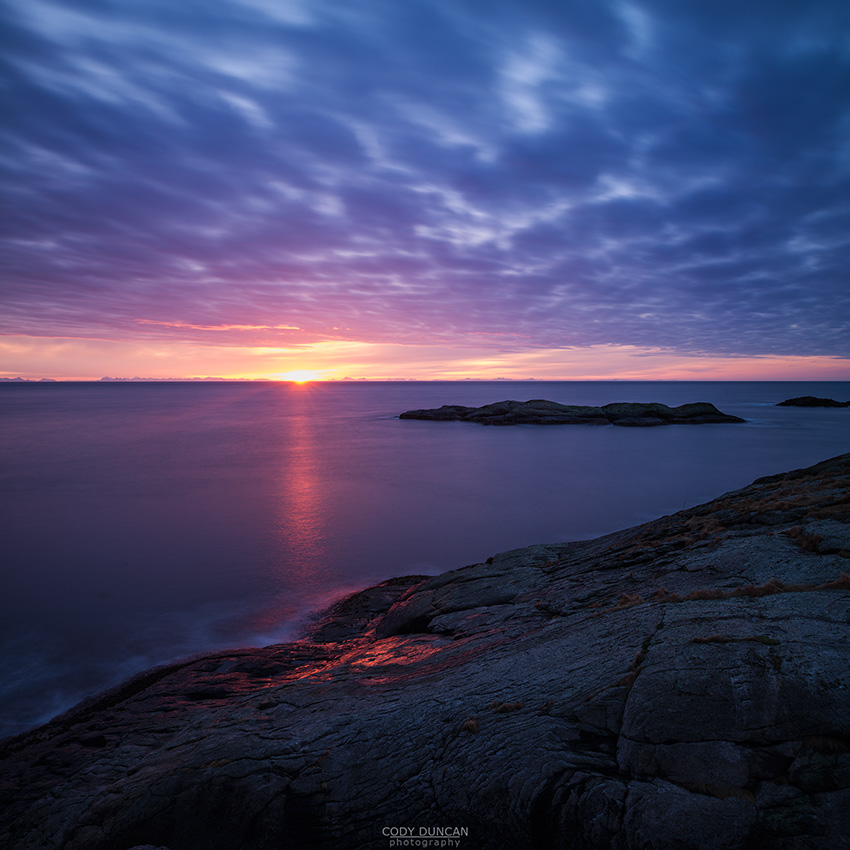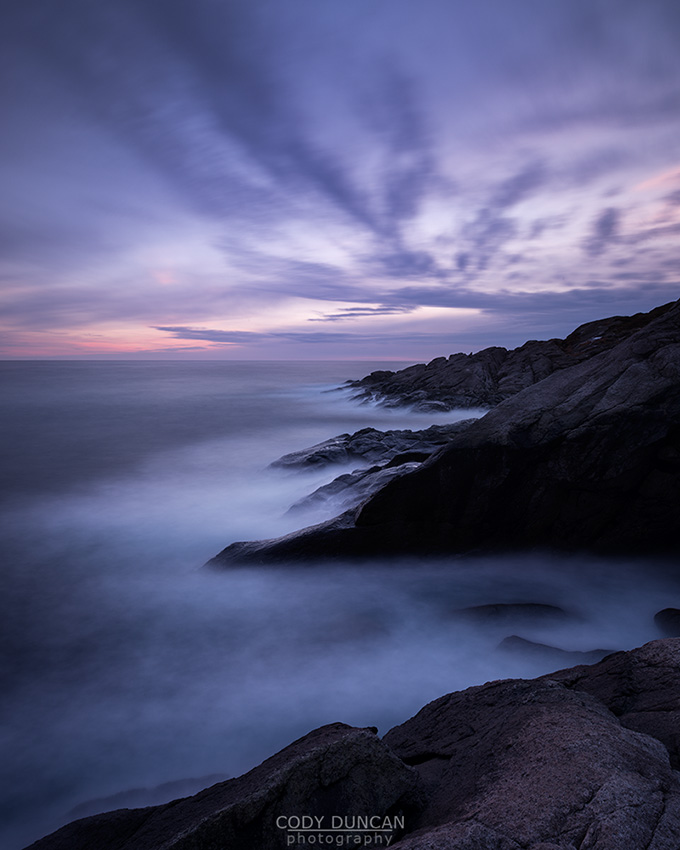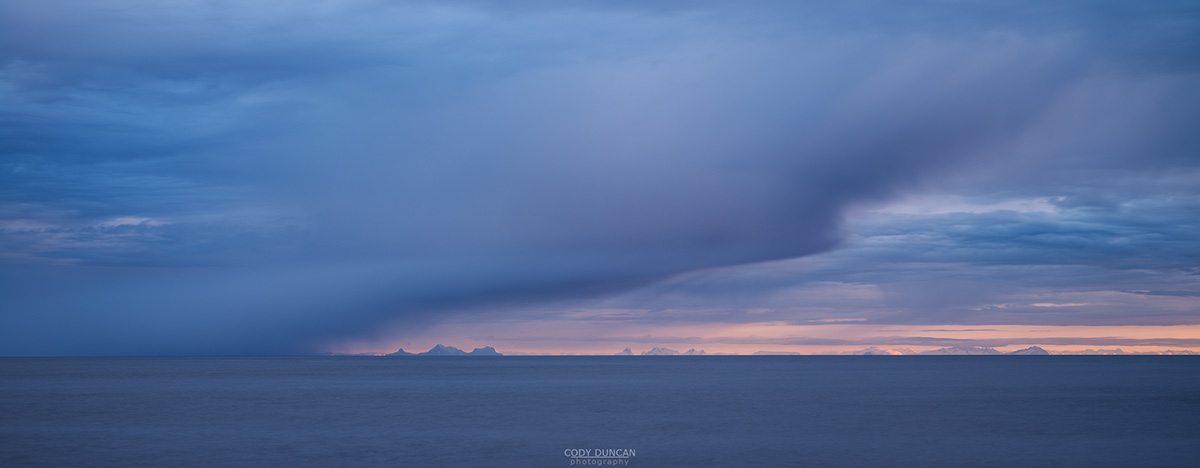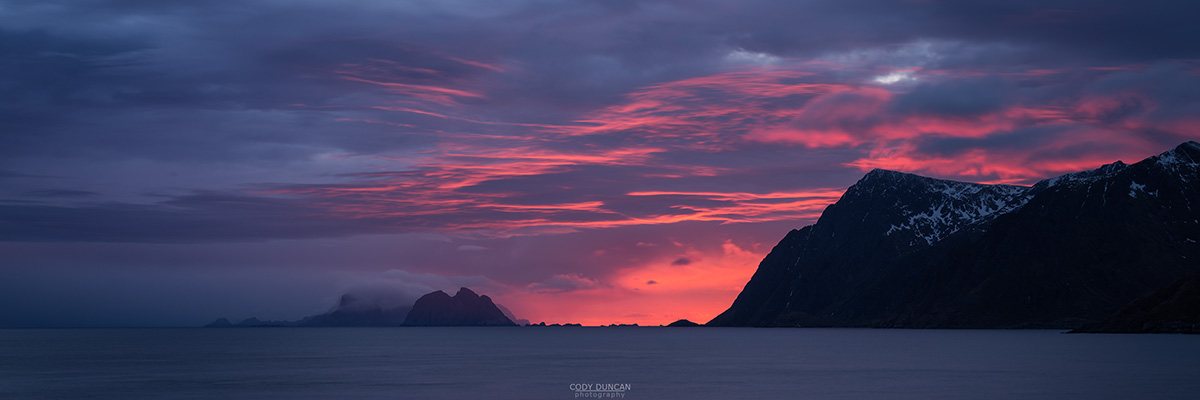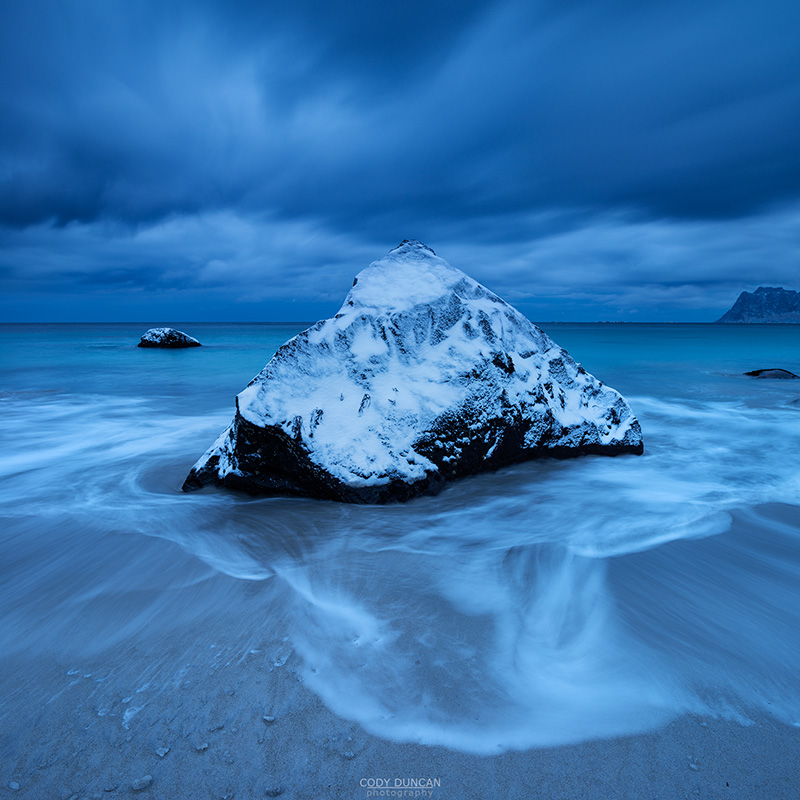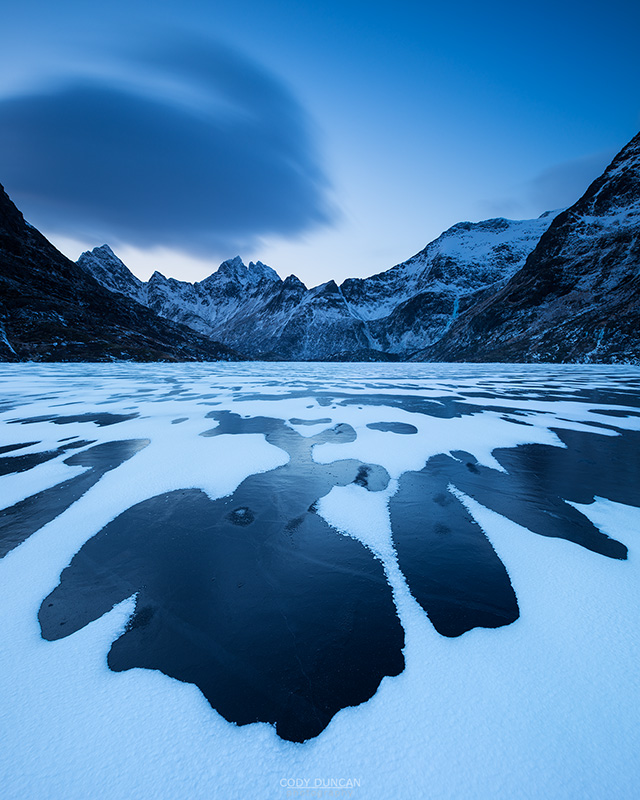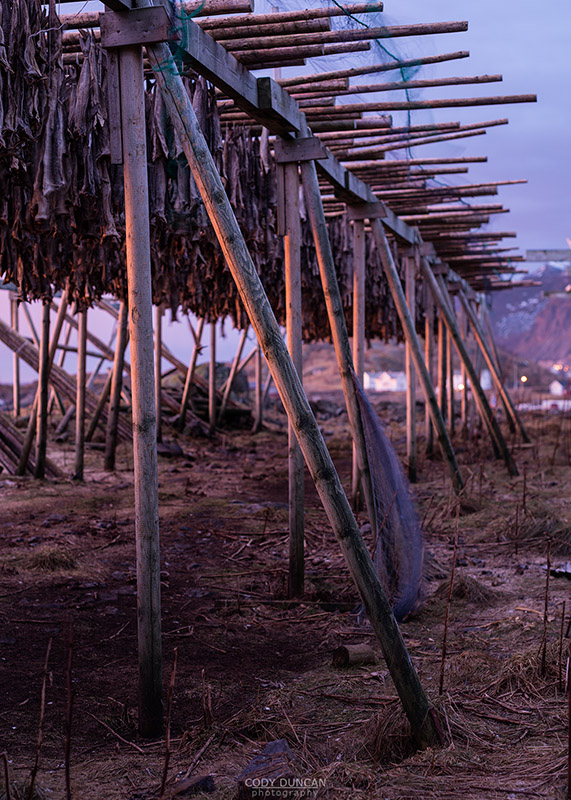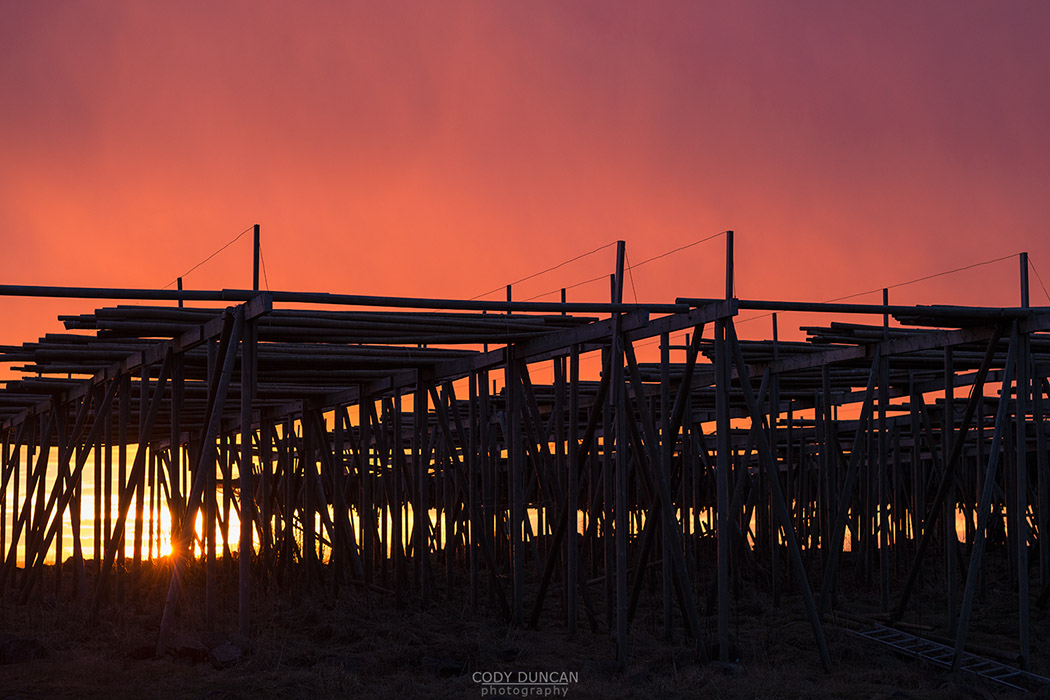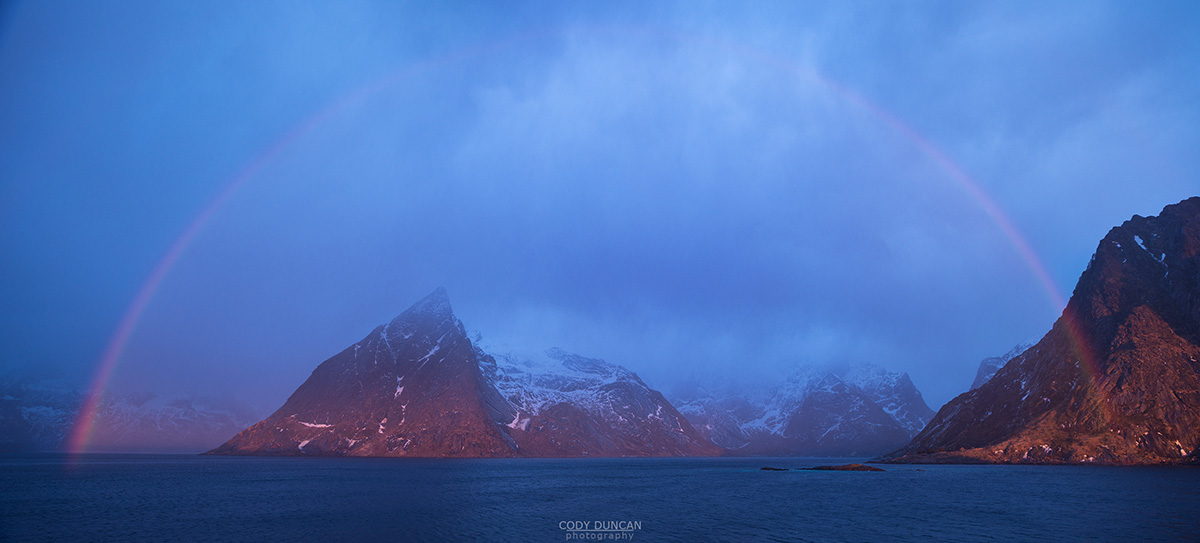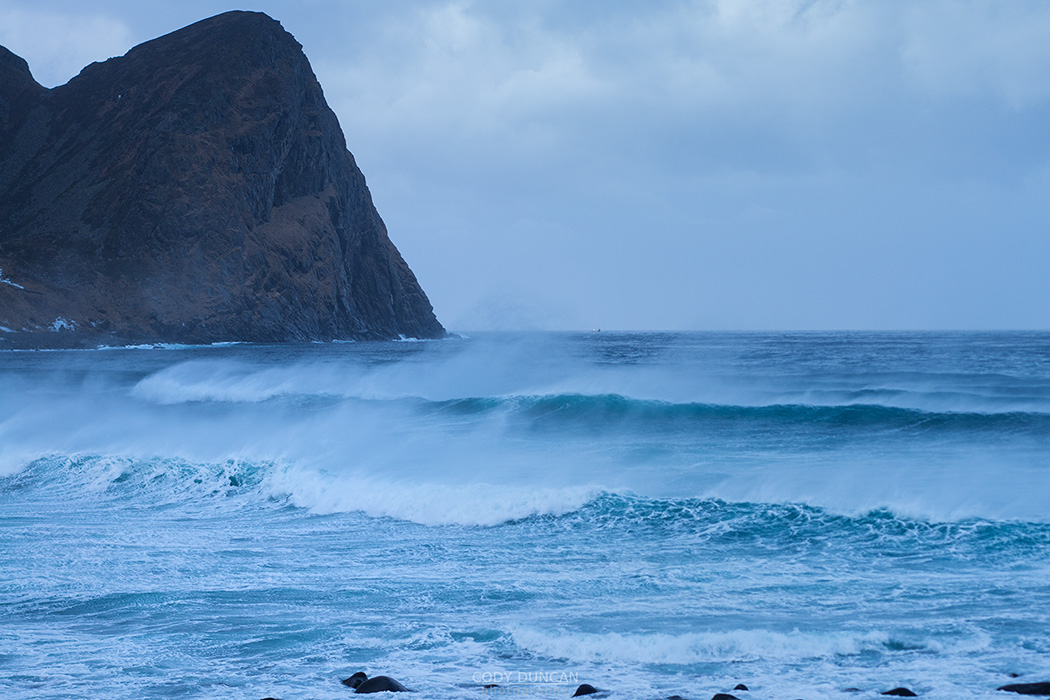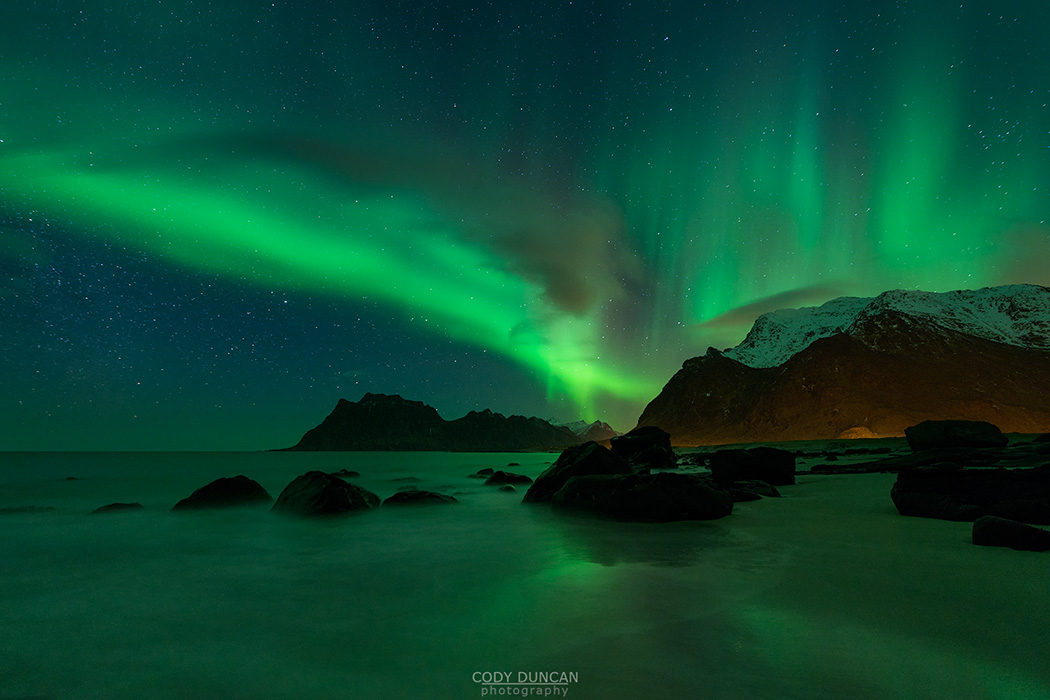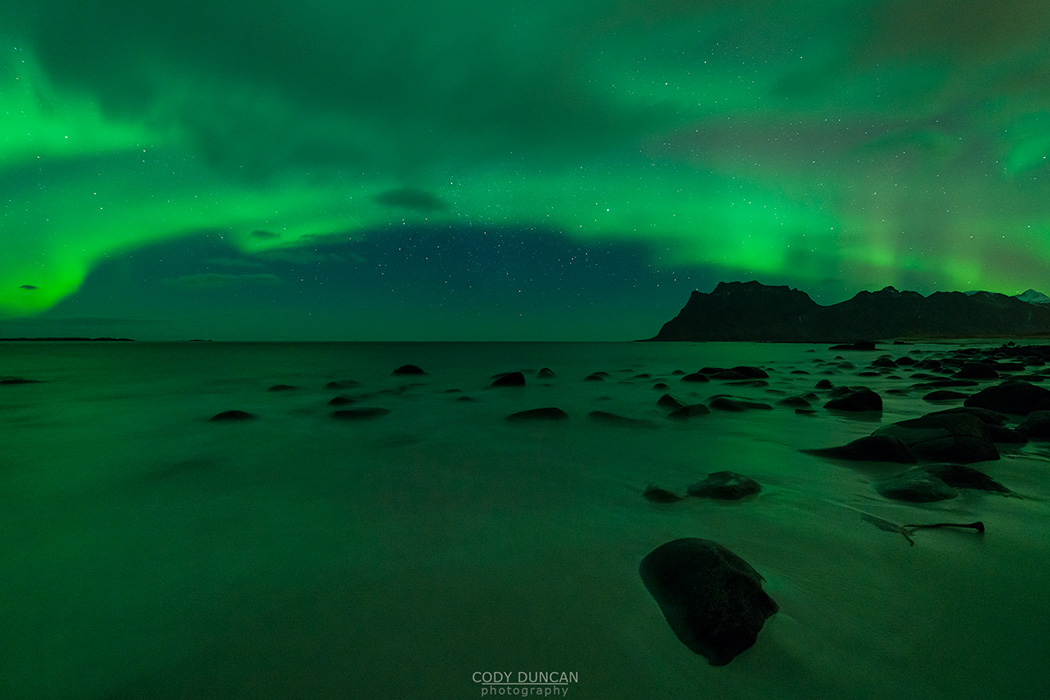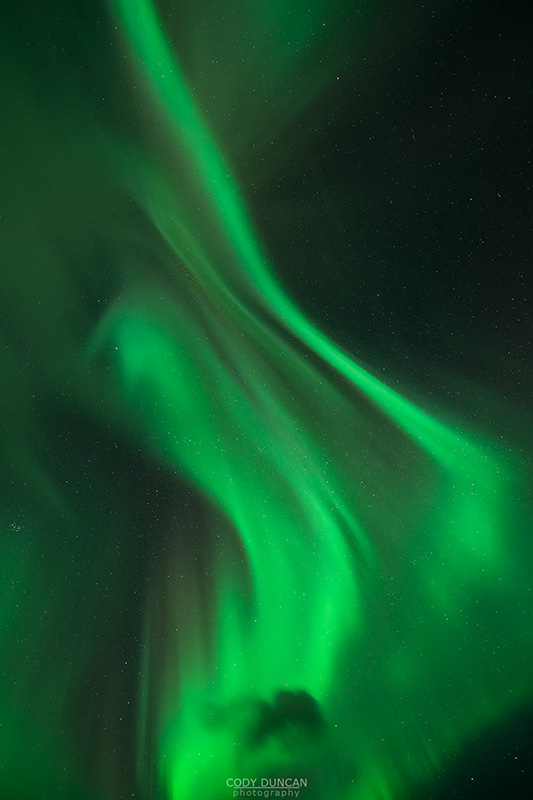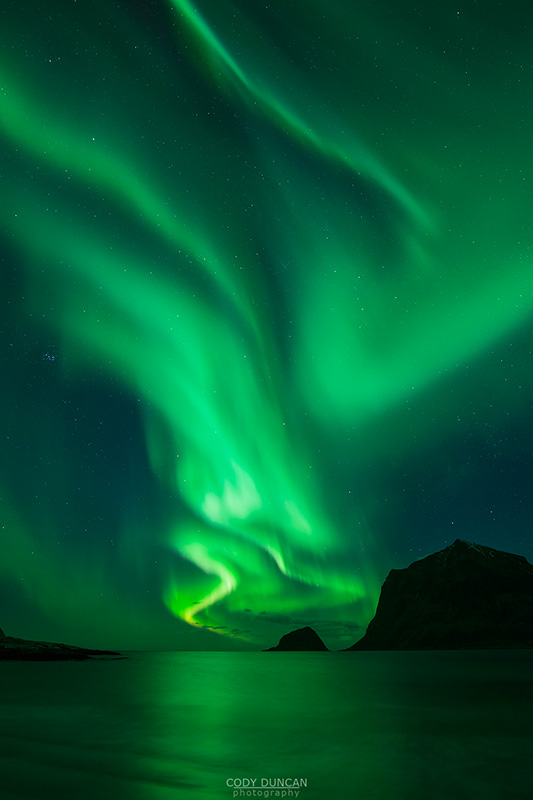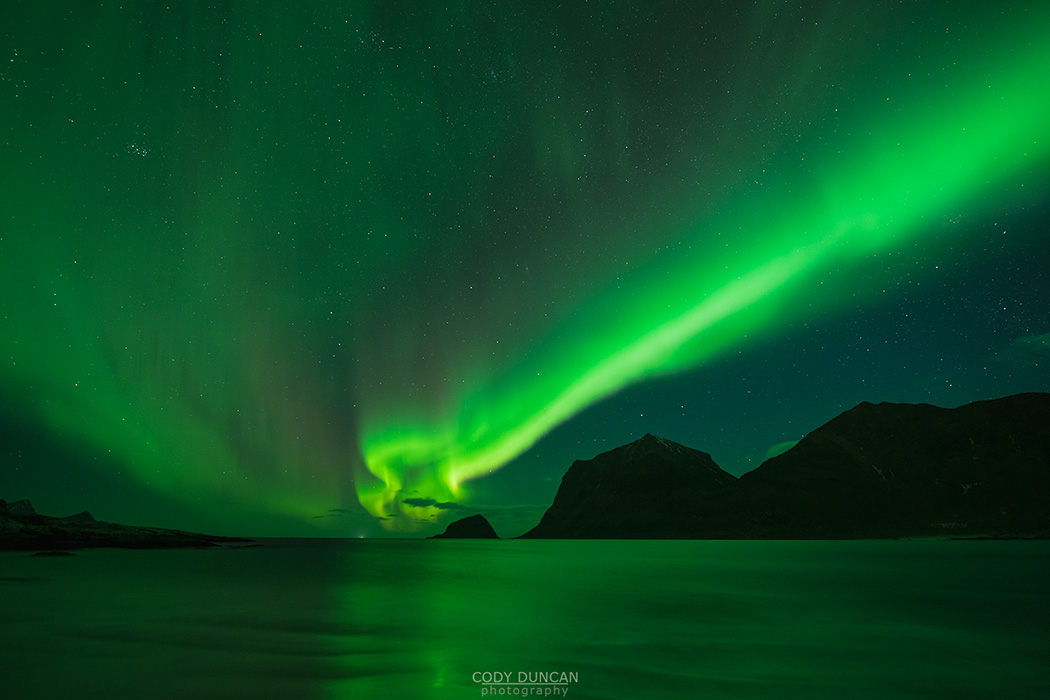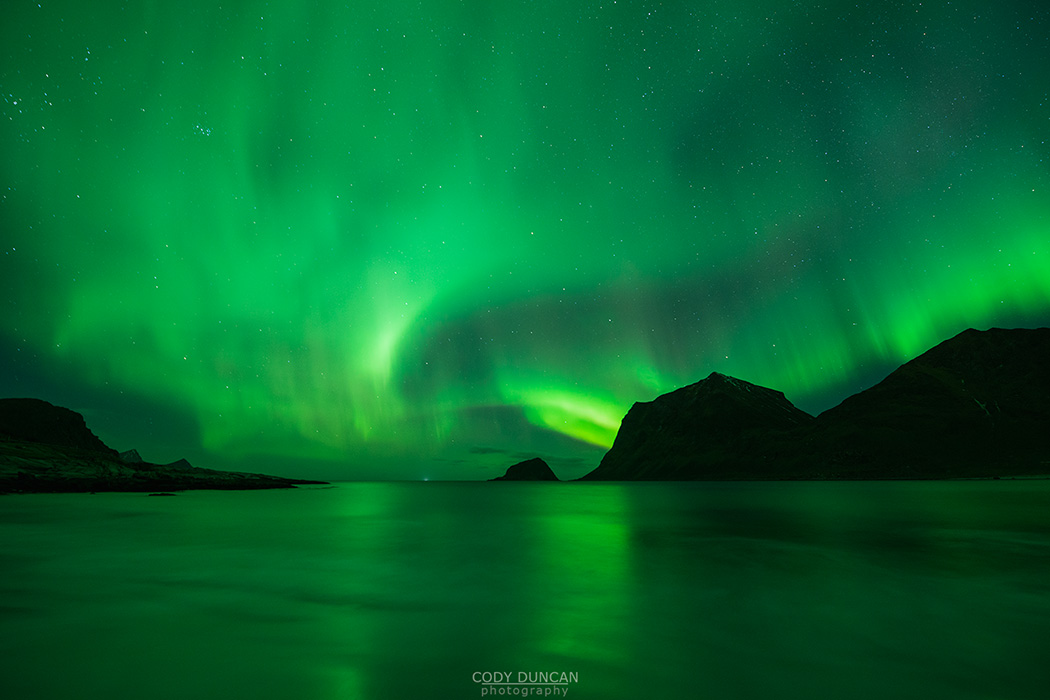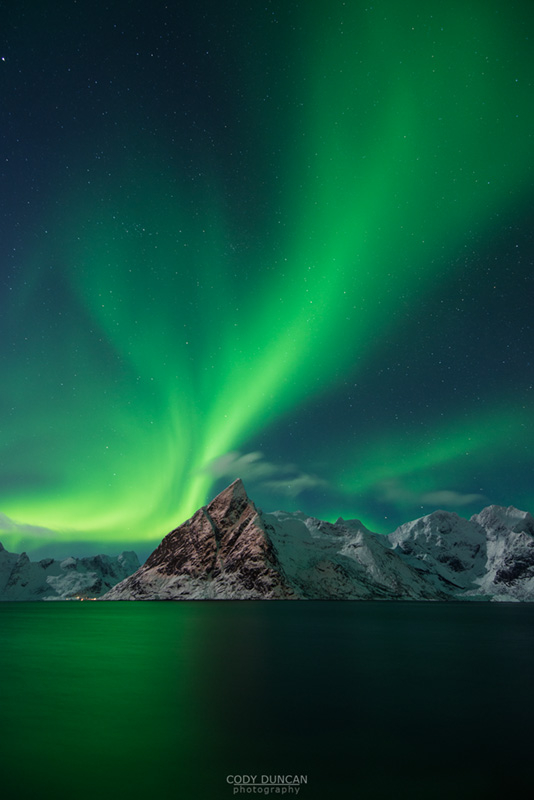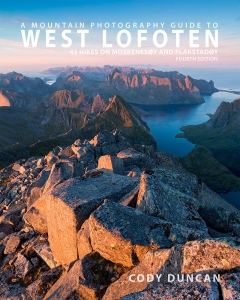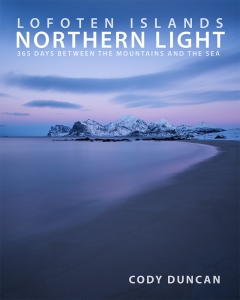Lofoten Islands Winter 2014 Part 7 – Horseid Beach
Photo: Jumping to the sky, Horseid beach, Moskenesøy, Lofoten Islands, Norway. March 2014
For a reason unknown to me, but likely having some purpose, the Monday morning ferry to Vindstad and Kjerkfjord leaves Reine at 07:00 am. In early March this means it’s still quite dark out. As the crew showed up and we boarded the boat I was still not sure where we would be going, but as the assistant came around to collect our payments I said Kjerkfjord. We were committed now.
We were the only two passengers onboard as MS Fjordkyss idled out of the harbour and into the fjord. The forecast was for dry weather, but I know better than to believe this, especially when Horseid is concerned, as the steep mountains gather all the nearby clouds and let them sit over the beach, dropping any rain they may have, before moving out to sea. So as I saw the heavy layer of cloud hanging over the pass, I wondered if it would not have been better to go to Bunes, which was cloud free as far as I could tell.
As the boat headed deeper into Kjerkfjord the first few drops of rain began to fall from the heavy clouds. Not again. I Thought. I was hoping to hike this route at least once without rain. My two previous visits having been rather soggy.
Soon the ferry pulled up to the small pier and dropped us off. We were now alone and the end of the world. Save for a few seagulls and the splashing of waves, the world was silent.
It must have been a bit colder here than in the fjord, as the rain began to turn into a warm snow, tentatively balanced on the border of freezing. But it was just cold enough to save me from putting my rain shell on, where I would likely overheat on the hike up the pass.
An added benefit of the cold temperatures is that much of the normally boggy and wet trail was frozen. Where feet would normally slip and sink into mud, the shoes gripped the solid ground and moved forward with ease. That is until the ice was reached.
Though the trail was more or less entirely snow free, other than the light amount falling as we hiked, it was quite icy, especially on the beach side where the numerous small creeks oozed out over the trail in frozen sheets of ice. The going down was slow, careful work to avoid slipping and several minor detours where required to circumvent some particularly icy sections of trail. Eventually flat ground was reached and we could hike with a bit more ease.
In summer, the worst section of the trail is the section around the lake and to the back of the beach. Despite my best efforts keeping my feet dry to that point, they never remain so, as hundreds of meters of bog and wet grass need to be crossed. Again, the cold came to our rescue and the frozen grass crunched underfoot. A few particularly muddy sections remained unfrozen, but these were easily avoided.
Upon reaching the sand, it is a deceptively long walk to my preferred camping area on the small grassy hill at the front of the beach, overlooking the the waves as they wash against the jagged cliffs. Here, there is one last obstacle to negotiate, in the form of a small creek. Often it can be a small hop across and on to some rocks, but as we neared, it was obviously going to take a bit more effort. Finding what I thought was a suitable place to cross, I put my trekking poles into the water and proceeded to jump. The poles instantly sunk beneath the sand and I lost momentum, sending one of my feet deep into the water. I mumbled a few low curses and I hiked up through the grass towards the top of the hill. I guess I wouldn’t avoid wet feet after all.
As we began to setup camp I noticed the weather beginning to clear a bit. I wasn’t sure if the March sun would rise high enough over the mountains for the beach to get any direct sunlight, as had been the case at Bunes beach a couple weeks before, but soon enough, the sun broke free of the clouds and cast a brilliant light over our camp and the beach. We had been halfway through with cooking lunch, but gave this up to go enjoy what little sunlight we might receive. A little before 13:00 shadow crept back across the sand as the sun returned behind the mountains for the remainder of the day.
With the beach now cast in shadow and the little warmth the sun provided gone, we headed back to camp to finally continue with lunch. The fuel canister for my stove wasn’t enjoying to cold temperatures as I attempted to boil water for soup. The best solution seemed for me to wrap my bare hands around it, my face a little closer to the flame than I would like, which provided enough warmth to get the stove moving at a slightly better pace.
The sky was nearly cloudless as evening arrived and I first headed back to the beach before then going out to the cliffs beyond camp, with some hope that maybe the sun might crest around the distant mountain which guarded the bay. It didn’t, but there was still some nice light to be seen.
Normally while camping, I would spend some hours sitting around a campfire. But in dry winter conditions, it was obvious that any attempt at a fire would likely light the surrounding grass and possibly start a wildfire. Not something I was looking to do. So it was back to the tent to warm up in the sleeping bags and stare at the stars.
The sky remained clear as the night progressed, and I proceeded with my usual system of having my alarm go off every 30 minutes in order to check for northern lights. But as much as I would have loved a shot of Auroras filling the sky over my tent, they remained quiet.
The only return ferry on Tuesday was the 15:00 afternoon one. This gave us a plenty of time to lounge around camp before packing up and heading back over the mountain to civilisation. It was another brilliantly sunny day. One of those perfect moments where you’re glad to be out in the wild. We gave ourselves longer than needed to make the return hike. This turned out to be way more time than necessary as ascending the icy trail was much quicker than our previous day’s descent. As we neared to top, we were cast back into the sun’s bright light, which remained over us for the remainder of the walk back to Kjerkfjord.
There is not much of anything in Kjerkfjord, but thankfully there is a small waiting room near the end of the pier; otherwise it would be a cold wait for the boat to come. Though I still remember a bad storm in summer of 2010 while heading out to Bunes beach, and picking up passengers from Kjerkfjord, half the passengers getting on seemed near hypothermic and soaked to the core. Perhaps it wasn’t the best day for a hike. It turned out not to be the best night for camping either, as I had to take shelter behind the old lady’s house at Bunes to keep my tent from breaking. The next two days were brilliant however…
Back at the car in Reine, we headed back to the hostel in Stamsund, which had now officially opened for the season, and I claimed my usual corner bunk. The weather began to turn and gale force winds swept over the islands. Indoor weather.
The storm caused havoc with the transportation and ferries were canceled or rerouted. As the final days arrived, I was anxiously checking conditions in order to figure out a way off the islands. In such condition, I would have likely taken the last flight of the day from Lenkes to Bodoø. But as we were leaving Bodø on a Sunday morning, the airport in Leknes closes around 14:00 on Saturdays, not really ideal. So with an OK looking forecast, I decided to gamble on the Hurtigruten being able to make it to port in Stamsund.
I kept checking the Hurtigruten website, which was reporting weather delays, but no cancelations for Lofoten. And watching the marine traffic website, I could see the boat on course to Stamsund, though this didn’t necessarily mean it could make it to harbour. Just before ten we said our goodbyes and left the hostel. Soon enough we were greeted with the loud horn of the Hurtigruten arriving at the harbour. The nervousness that I had been feeling all day calmed a bit. Though in one last act to keep me a bit on edge, They seemed to have trouble lowering the passenger foot ramp, which lowered up and down for 20 minutes or so as us passengers looked on nervously. Finally, they seemed to give up and we were herded onto the car elevator and taken below deck, where we then had to follow a maze of hallways and stairs to find the reception, my skis banging into just about everything they could.
It was a rough crossing, but not the worst I’ve encountered, as the ship made it’s way across the stormy waters of the Vestfjord and onward to Bodø. Arriving in the early hours of the morning, we had a bit of time to spend in the ferry terminal waiting room before continuing on to the airport. In my last couple winter encounters, the door has been locked, requiring a phone call to gain entrance. But as I approached the doors open, where I was immediately hit with the stench of stale alcohol and some rather homeless looking guys sitting on the benches – the reason they began locking the door in the first place. I made a bed out of chairs and did my best to sleep, but I was too nervous about the drunks to get much. Unsure if the airport opened at 4 or 5 in the morning, we decided to split the difference and leave a little after 04:00am for the 30 minute walk.
Norway wouldn’t give us up so easily and we were given one last rainy walk through the dark streets of Bodø. It turns out the airport opens at 05:00am, so we had to sit outside awhile before someone finally came along and opened the door. Soon enough we were in the sky, and I was heading south after 5 weeks in the Scandinavian arctic.
Photo: Hiking towards Horseid beach, Moskenesøy, Lofoten Islands, Norway. March 2014
Photo: Walking across the vast sands of Horseid beach, Moskenesøy, Lofoten Islands, Norway. March 2014
Photo: Setting up camp at Horseid beach, Moskenesøy, Lofoten Islands, Norway. March 2014
Photo: Wild camping at Horseid beach, Moskenesøy, Lofoten Islands, Norway. March 2014
Photo: The low winter sun shines brightly over Horseid beach, Moskenesøy, Lofoten Islands, Norway. March 2014
Photo: Tent and mountains, Horseid beach, Moskenesøy, Lofoten Islands, Norway. March 2014
Photo: Mountain reflection on Horseid beach, Moskenesøy, Lofoten Islands, Norway. March 2014
Photo: Night at Horseid beach, Moskenesøy, Lofoten Islands, Norway. March 2014
Photo: Warming hands after a cold winter night at Horseid beach, Moskenesøy, Lofoten Islands, Norway. March 2014
Photo: Panoramic view over Horseid beach, Moskenesøy, Lofoten Islands, Norway. March 2014
Photo: Returning to Kjerkfjord from Horseid beach, Moskenesøy, Lofoten Islands, Norway. March 2014
Photo: Waiting for the ferry in Kjerkfjord, Moskenesøy, Lofoten Islands, Norway. March 2014
